
- F.A. Bertran, Oğuz ‘Oz’ Buruk, J.M. Puig et al. -
CHI '25 Full Paper [h5-index: 129]
[acceptance rate: 24.9%]
@inproceedings{joyforest2025chi, author = {Altarriba Bertran, Ferran and Buruk, Oğuz ‘Oz’ and Márquez Puig, Jordi and Hamari, Juho}, title = {How Can Interactive Technology Help Us to Experience Joy With(in) the Forest? Towards a Taxonomy of Tech for Joyful Human-Forest Interactions}, year = {2025}, isbn = {9798400713941}, publisher = {Association for Computing Machinery}, address = {New York, NY, USA}, url = {https://doi.org/10.1145/3706598.3713151}, doi = {10.1145/3706598.3713151}, abstract = {This paper presents intermediate-level knowledge in the form of a taxonomy that highlights 12 different ways in which interactive tech might support forest-related experiences that are joyful for humans. It can inspire and provide direction for designs that aim to enrich the experiential texture of forests. The taxonomy stemmed from a reflexive analysis of 104 speculative ideas produced during a year-long co-design process, where we co-experienced and creatively engaged a diverse range forests and forest-related activities with 250+ forest-goers with varied backgrounds and sensitivities. Given that breadth of forests and populations involved, our work foregrounds a rich set of design directions that set an actionable early frame for creating tech that supports joyful human-forest interplays – one that we hope will be extended and consolidated in future research, ours and others'.}, booktitle = {Proceedings of the 2025 CHI Conference on Human Factors in Computing Systems}, articleno = {742}, numpages = {21}, keywords = {Nature, celebratory tech, forests, interactive tech, joy, play, speculative design}, location = { }, series = {CHI '25} }
Ferran Altarriba Bertran, Oğuz ‘Oz’ Buruk, Jordi Márquez Puig and Juho Hamari. 2025. How Can Interactive Technology Help Us to Experience Joy With(in) the Forest? Towards a Taxonomy of Tech for Joyful Human-Forest Interactions. In Proceedings of the 2025 CHI Conference on Human Factors in Computing Systems (CHI '25). Association for Computing Machinery, New York, NY, USA, Article 742, 21 pages. https://doi.org/10.1145/3706598.3713151
Altarriba Bertran, F., Buruk, O., Márquez Puig, J., & Hamari, J. (2025). How Can Interactive Technology Help Us to Experience Joy With(in) the Forest? Towards a Taxonomy of Tech for Joyful Human-Forest Interactions. In Proceedings of the 2025 CHI Conference on Human Factors in Computing Systems (CHI '25). Article 742, pp. 1-21. New York, NY, USA, Association for Computing Machinery, https://doi.org/10.1145/3706598.3713151
Altarriba Bertran, Ferran et al. "How Can Interactive Technology Help Us to Experience Joy With(in) the Forest? Towards a Taxonomy of Tech for Joyful Human-Forest Interactions." In Proceedings of the 2025 CHI Conference on Human Factors in Computing Systems (CHI '25), New York, NY, USA, Association for Computing Machinery, 2025, Article 742, pp. 1-21. https://doi.org/10.1145/3706598.3713151
Altarriba Bertran, F., Buruk, O., Márquez Puig, J., and Hamari, J. (2025). ‘How Can Interactive Technology Help Us to Experience Joy With(in) the Forest? Towards a Taxonomy of Tech for Joyful Human-Forest Interactions’, In Proceedings of the 2025 CHI Conference on Human Factors in Computing Systems (CHI '25), Article 742, p. 1-21. New York, NY, USA: Association for Computing Machinery, https://doi.org/10.1145/3706598.3713151
Altarriba Bertran F, Buruk O, Márquez Puig J, Hamari J. How Can Interactive Technology Help Us to Experience Joy With(in) the Forest? Towards a Taxonomy of Tech for Joyful Human-Forest Interactions. In: Proceedings of the 2025 CHI Conference on Human Factors in Computing Systems (CHI '25). New York, NY, USA: Association for Computing Machinery; 2025. Article 742 p. 1-21. Available from: https://doi.org/10.1145/3706598.3713151
Altarriba Bertran, Ferran, Oğuz ‘Oz’ Buruk, Jordi Márquez Puig, and Juho Hamari. "How Can Interactive Technology Help Us to Experience Joy With(in) the Forest? Towards a Taxonomy of Tech for Joyful Human-Forest Interactions." In Proceedings of the 2025 CHI Conference on Human Factors in Computing Systems (CHI '25), New York, NY, USA, Association for Computing Machinery, (2025): Article 742,1-21. https://doi.org/10.1145/3706598.3713151
ALTARRIBA BERTRAN, F.; BURUK, O.; MáRQUEZ PUIG, J.; HAMARI, J. How Can Interactive Technology Help Us to Experience Joy With(in) the Forest? Towards a Taxonomy of Tech for Joyful Human-Forest Interactions. In: Proceedings of the 2025 CHI Conference on Human Factors in Computing Systems (CHI '25). New York, NY, USA: Association for Computing Machinery, 2025. Article 742, pp. 1-21. https://doi.org/10.1145/3706598.3713151
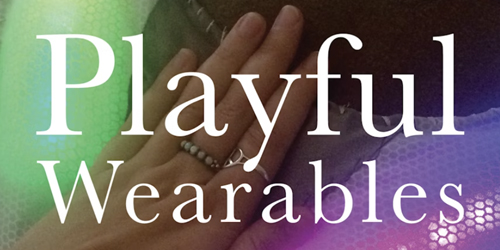
- Oğuz ‘Oz’ Buruk, Ella Dagan, K. Isbister et al. -
Book
@book{wearablesbook2024mitp, title = {Playful Wearables: Understanding the Design Space of Wearables for Games and Related Experiences}, abstract = {An expert introduction to the world of “playful wearables” and their design, with a wide range of engaging examples, case studies, and exercises. This pioneering introduction to the world of wearable technology takes readers beyond the practical realm (think Fitbits, Apple watches, and smart glasses) to consider another important side of the technology—the playful. Playful Wearables offers an engaging account of what “playful wearables” are, why they matter, how they work, how they’re made, and what their future might hold. The book’s authors—Oğuz Buruk, Ella Dagan, Katherine Isbister, Elena Márquez Segura, and Theresa Jean Tanenbaum—draw on decades of experience in design, development, and research to offer real-world examples, exercises, and implications, showing how this kind of wearable tech can introduce an invaluable element of play into our everyday lives. As wearable technology emerges in the ecology of costume and fashion, the authors consider its intimate connection to identity and culture. And they look at the ways in which playful wearables, when smoothly integrated into everyday social experiences, support social interaction. The book then moves on to the mechanics of playful wearables—from design strategies and frameworks to specific methods and game design patterns—the building blocks for great playful, wearable designs. All of these elements point to possibilities beyond the realm of games and dedicated play, as the value and uses of playful wearables in the larger world of self, society, and culture become ever more apparent.}, publisher = {MIT Press}, author = {Buruk, Oğuz ‘Oz’ and Dagan, Ella and Isbister, Katherine and Segura, Elena Márquez and Tanenbaum, Theresa Jean}, url = {https://mitpress.mit.edu/9780262546911/playful-wearables/}, year = {2024} }
Oğuz ‘Oz’ Buruk, Ella Dagan, Katherine Isbister, Elena Márquez Segura and Theresa Jean Tanenbaum. 2024. Playful Wearables: Understanding the Design Space of Wearables for Games and Related Experiences. MIT Press. https://mitpress.mit.edu/9780262546911/playful-wearables/
Buruk, O., Dagan, E., Isbister, K., Segura, E. M., & Tanenbaum, T. J. (2024). Playful Wearables: Understanding the Design Space of Wearables for Games and Related Experiences. https://mitpress.mit.edu/9780262546911/playful-wearables/
Buruk, Oğuz ‘Oz’ et al. "Playful Wearables: Understanding the Design Space of Wearables for Games and Related Experiences." 2024, https://mitpress.mit.edu/9780262546911/playful-wearables/
Buruk, O., Dagan, E., Isbister, K., Segura, E. M., and Tanenbaum, T. J. (2024). ‘Playful Wearables: Understanding the Design Space of Wearables for Games and Related Experiences’, MIT Press, https://mitpress.mit.edu/9780262546911/playful-wearables/
Buruk O, Dagan E, Isbister K, Segura EM, Tanenbaum TJ. Playful Wearables: Understanding the Design Space of Wearables for Games and Related Experiences. . 2024. Available from: https://mitpress.mit.edu/9780262546911/playful-wearables/
Buruk, Oğuz ‘Oz’, Ella Dagan, Katherine Isbister, Elena Márquez Segura, and Theresa Jean Tanenbaum. "Playful Wearables: Understanding the Design Space of Wearables for Games and Related Experiences." MIT Press, (2024): https://mitpress.mit.edu/9780262546911/playful-wearables/
BURUK, O.; DAGAN, E.; ISBISTER, K.; SEGURA, E. M.; TANENBAUM, T. J. Playful Wearables: Understanding the Design Space of Wearables for Games and Related Experiences. MIT Press, 2024. https://mitpress.mit.edu/9780262546911/playful-wearables/
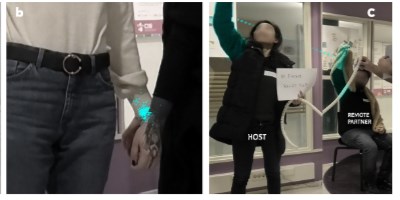
- Çağlar Genç, Velvet Spors, Oğuz ‘Oz’ Buruk, et al. -
CSCW Full Paper [h5-index: 81]
@article{transhuman2024cscw, author = {Genç, Çağlar and Spors, Velvet and Buruk, Oğuz ‘Oz’ and Thibault, Mattia and Masek, Leland and Hamari, Juho}, title = {Transhuman Communication: Human Augmentation Technologies through Co-Speculation Workshops}, year = {2024}, issue_date = {November 2024}, publisher = {Association for Computing Machinery}, address = {New York, NY, USA}, volume = {8}, number = {CSCW2}, url = {https://doi.org/10.1145/3686892}, doi = {10.1145/3686892}, abstract = {The advancement of human-computer integration as a research field promises to introduce transhumanistic ways of communicating through the enhanced abilities of augmented humans. Our work seeks to illuminate this experiential landscape, exploring a diverse set of human augmentation technologies (HATs) for communication purposes. We investigated this topic through four co-speculation workshops focusing on physical, cognitive, sensory and emotional augmentations with 35 participants. Through a reflexive thematic analysis of the workshop data, we outlined eight HAT speculations for transhuman communication, grouped into four overarching augmentation clusters: (1) Bodily Changes in/for Communication, (2) Communication with Transferrable and Collective Beings, (3) Communication through Emotion and Memory, and (4) Communication with Augmented/Altered Perception. By serving as a foundation for discussions on transhumanism and communication in CSCW and beyond, these speculations contribute to a design space highlighting design opportunities and challenges to developing and researching near-future communication technologies.}, journal = {Proc. ACM Hum.-Comput. Interact.}, articleno = {353}, numpages = {26}, keywords = {communication, cyborg, human augmentation, human-technology integration, speculative design, transhumanism, wearables}, series = {CSCW} }
Çağlar Genç, Velvet Spors, Oğuz ‘Oz’ Buruk, Mattia Thibault, Leland Masek and Juho Hamari. 2024. Transhuman Communication: Human Augmentation Technologies through Co-Speculation Workshops. Proc. ACM Hum.-Comput. Interact. 8, CSCW2, Article 353 (November 2024). https://doi.org/10.1145/3686892
Genç, Ç., Spors, V., Buruk, O., Thibault, M., Masek, L., & Hamari, J. (2024). Transhuman Communication: Human Augmentation Technologies through Co-Speculation Workshops. Proc. ACM Hum.-Comput. Interact. 8(CSCW2), Article 353 (November 2024), 1-26. https://doi.org/10.1145/3686892
Genç, Çağlar et al. "Transhuman Communication: Human Augmentation Technologies through Co-Speculation Workshops." Proc. ACM Hum.-Comput. Interact., vol. 8 no. CSCW2, (November 2024), 2024, Article 353, pp. 1-26. https://doi.org/10.1145/3686892
Genç, Ç., Spors, V., Buruk, O., Thibault, M., Masek, L., and Hamari, J. (2024). ‘Transhuman Communication: Human Augmentation Technologies through Co-Speculation Workshops’, Proc. ACM Hum.-Comput. Interact. 8, Article 353 (November 2024), p. 1-26. New York, NY, USA: Association for Computing Machinery, https://doi.org/10.1145/3686892
Genç Ç, Spors V, Buruk O, Thibault M, Masek L, Hamari J. Transhuman Communication: Human Augmentation Technologies through Co-Speculation Workshops. Proc. ACM Hum.-Comput. Interact.. 2024:8(CSCW2) Article 353 (November 2024) p. 1-26. Available from: https://doi.org/10.1145/3686892
Genç, Çağlar, Velvet Spors, Oğuz ‘Oz’ Buruk, Mattia Thibault, Leland Masek, and Juho Hamari. "Transhuman Communication: Human Augmentation Technologies through Co-Speculation Workshops." Proc. ACM Hum.-Comput. Interact. 8, no. CSCW2New York, NY, USA, Association for Computing Machinery, (2024): Article 353,1-26. https://doi.org/10.1145/3686892
GENç, Ç.; SPORS, V.; BURUK, O.; THIBAULT, M.; MASEK, L.; HAMARI, J. Transhuman Communication: Human Augmentation Technologies through Co-Speculation Workshops. Proc. ACM Hum.-Comput. Interact. New York, NY, USA: Association for Computing Machinery, 2024. 8(CSCW2), Article 353 (November 2024), 1-26. https://doi.org/10.1145/3686892
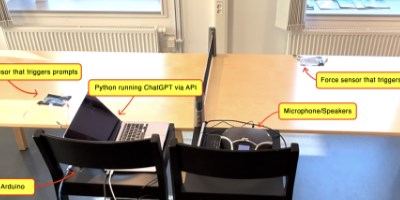
- Ahmet Börütecene, Oğuz ‘Oz’ Buruk, -
HttF '24 Full Paper
[acceptance rate: 36%]
@inproceedings{pinpongpt2024httf, author = {Börütecene, Ahmet and Buruk, Oğuz ‘Oz’}, title = {Dr. Ping and Dr. Pong: Rethinking Writing and Work with Playful Embodied AIs}, year = {2024}, isbn = {9798400710421}, publisher = {Association for Computing Machinery}, address = {New York, NY, USA}, url = {https://doi.org/10.1145/3686169.3686214}, doi = {10.1145/3686169.3686214}, abstract = {What if artificial intelligence (AI) could transform academic writing into an exhilarating game of table tennis? This paper explores AI’s potential to foster creativity, enjoyment, and play. We challenge the view of AI as merely a tool for efficiency, showcasing its capacity for embodied interaction and intellectual engagement. We introduce an AI-infused table tennis setup, where two people can co-author a paper while playing ping pong. Using ChatGPT and an Arduino-driven system, this environment generates writing prompts based on gameplay, blending physical play with intellectual practice. Through PingPonGPT, we demonstrate AI’s role in reflective practices, enriching overall work and creative processes.}, booktitle = {Proceedings of the Halfway to the Future Symposium}, articleno = {11}, numpages = {5}, keywords = {AI, ChatGPT, Embodied Interaction, Games, More-than-human, Play, Table Tennis}, location = {Santa Cruz, CA, USA}, series = {HttF '24} }
Ahmet Börütecene and Oğuz ‘Oz’ Buruk. 2024. Dr. Ping and Dr. Pong: Rethinking Writing and Work with Playful Embodied AIs. In Proceedings of the Halfway to the Future Symposium (HttF '24). Association for Computing Machinery, New York, NY, USA, Article 11, 5 pages. https://doi.org/10.1145/3686169.3686214
Börütecene, A., & Buruk, O. (2024). Dr. Ping and Dr. Pong: Rethinking Writing and Work with Playful Embodied AIs. In Proceedings of the Halfway to the Future Symposium (HttF '24). Article 11, pp. 1-5. New York, NY, USA, Association for Computing Machinery, https://doi.org/10.1145/3686169.3686214
Börütecene, Ahmet and Oğuz ‘Oz’ Buruk."Dr. Ping and Dr. Pong: Rethinking Writing and Work with Playful Embodied AIs." In Proceedings of the Halfway to the Future Symposium (HttF '24), New York, NY, USA, Association for Computing Machinery, 2024, Article 11, pp. 1-5. https://doi.org/10.1145/3686169.3686214
Börütecene, A., and Buruk, O. (2024). ‘Dr. Ping and Dr. Pong: Rethinking Writing and Work with Playful Embodied AIs’, In Proceedings of the Halfway to the Future Symposium (HttF '24), Article 11, p. 1-5. New York, NY, USA: Association for Computing Machinery, https://doi.org/10.1145/3686169.3686214
Börütecene A, Buruk O. Dr. Ping and Dr. Pong: Rethinking Writing and Work with Playful Embodied AIs. In: Proceedings of the Halfway to the Future Symposium (HttF '24). New York, NY, USA: Association for Computing Machinery; 2024. Article 11 p. 1-5. Available from: https://doi.org/10.1145/3686169.3686214
Börütecene, Ahmet, and Oğuz ‘Oz’ Buruk. "Dr. Ping and Dr. Pong: Rethinking Writing and Work with Playful Embodied AIs." In Proceedings of the Halfway to the Future Symposium (HttF '24), New York, NY, USA, Association for Computing Machinery, (2024): Article 11,1-5. https://doi.org/10.1145/3686169.3686214
BöRüTECENE, A.; BURUK, O. Dr. Ping and Dr. Pong: Rethinking Writing and Work with Playful Embodied AIs. In: Proceedings of the Halfway to the Future Symposium (HttF '24). New York, NY, USA: Association for Computing Machinery, 2024. Article 11, pp. 1-5. https://doi.org/10.1145/3686169.3686214

- Eshtiak Ahmed, Oğuz ‘Oz’ Buruk, Juho Hamari -
IJSORO Full Paper [h5-index: 56, impact factor: 3.8]
@article{hrcompanion2024ijsoro, title = {Human-Robot Companionship: Current Trends and Future Agenda}, author = {Ahmed, Eshtiak and Buruk, Oğuz ‘Oz’ and Hamari, Juho}, abstract = {The field of robotics has grown exponentially over the years, especially the social aspect, which has enabled robots to interact with humans meaningfully. Robots are now used in many domains, such as manufacturing, healthcare, education, entertainment, rehabilitation, etc. Along with their widespread use in many real-life environments, robots have been used as companions to humans. With the increased amount of research done on human–robot partnership (HRC), it is important to understand how this domain is developing, in which direction, and what the future might hold. There is also a need to understand the influenza factors and what kind of empirical results are in the literature. To address these questions, we conducted a systematic literature review and analyzed a final number of 134 relevant articles. The findings suggest that anthropomorphic and zoomorphic robots are more popular as human companions, while there is a lack of interest in functional and caricatured robots. Also, human-like and animal-like features are implemented more in companion robots. Studies rarely exploit the mobility available in these robots in companionship scenarios, especially in outdoor settings. In addition to that, co-existence and co-performance-based implementation with people have been observed rarely. Based on the results, we propose a future research agenda that includes thematic, theoretical, methodological, and technological agendas. This study will help us understand the current state and use of robotic companies which will then potentially aid in determining how HRC can be leveraged and integrated more seamlessly into human lives for better effectiveness.}, journal = {International Journal of Social Robotics}, pages = {1-52}, year = {2024}, doi = {10.1007/s12369-024-01160-y}, publisher = {Springer} }
Eshtiak Ahmed, Oğuz ‘Oz’ Buruk and Juho Hamari. 2024. Human-Robot Companionship: Current Trends and Future Agenda. International Journal of Social Robotics: 1-52. https://doi.org/10.1007/s12369-024-01160-y
Ahmed, E., Buruk, O., & Hamari, J. (2024). Human-Robot Companionship: Current Trends and Future Agenda. International Journal of Social Robotics 1-52. https://doi.org/10.1007/s12369-024-01160-y
Ahmed, Eshtiak et al. "Human-Robot Companionship: Current Trends and Future Agenda." International Journal of Social Robotics, 2024, pp. 1-52. https://doi.org/10.1007/s12369-024-01160-y
Ahmed, E., Buruk, O., and Hamari, J. (2024). ‘Human-Robot Companionship: Current Trends and Future Agenda’, International Journal of Social Robotics p. 1-52. Springer, https://doi.org/10.1007/s12369-024-01160-y
Ahmed E, Buruk O, Hamari J. Human-Robot Companionship: Current Trends and Future Agenda. International Journal of Social Robotics. 2024: p. 1-52. Available from: https://doi.org/10.1007/s12369-024-01160-y
Ahmed, Eshtiak, Oğuz ‘Oz’ Buruk, and Juho Hamari. "Human-Robot Companionship: Current Trends and Future Agenda." International Journal of Social RoboticsSpringer, (2024): 1-52. https://doi.org/10.1007/s12369-024-01160-y
AHMED, E.; BURUK, O.; HAMARI, J. Human-Robot Companionship: Current Trends and Future Agenda. International Journal of Social Robotics Springer, 2024. 1-52. https://doi.org/10.1007/s12369-024-01160-y
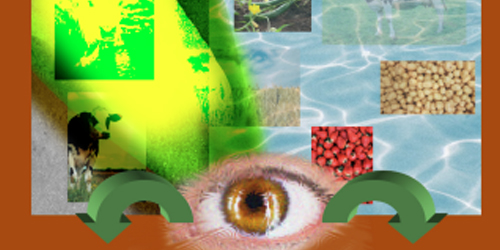
- Velvet Spors, Oğuz ‘Oz’ Buruk, Juho Hamari -
CHI '24 Full Paper [h5-index: 122]
[acceptance rate: 26.4%]
@inproceedings{ecologocialcongr2024chi, author = {Spors, Velvet and Buruk, Oğuz ‘Oz’ and Hamari, Juho}, title = {Ecological In/Congruence: Becoming Sensitised to Nature in Video Games through Humanistic First-Person Research}, year = {2024}, isbn = {9798400703300}, publisher = {Association for Computing Machinery}, address = {New York, NY, USA}, url = {https://doi.org/10.1145/3613904.3642659}, doi = {10.1145/3613904.3642659}, abstract = {The ongoing ecological crisis is the current biggest threat for our species. As we attempt to address the situation through policy, interventions, and education, we urgently need to understand how people encounter and relate to nature: As it is, in the world, and portrayed through different media. As an exemplary medium facilitating digital nature, this paper focuses on video games. Using first-person research methods, we report on the first author sensitising themselves to nature as a ubiquitous feature, theme, and actor in video games. They played eight nature-focused games for three months. Through auto-ethnography, close reading and “noticing” (after Tsing), we make sense of their experiences using the humanistic concept of ecological (in)congruence: We draw out the relational gap and potential meanings between real nature and its virtual equivalent. Based on these insights, we outline two design impulses for how the HCI community might approach nature—within games and beyond.}, booktitle = {Proceedings of the CHI Conference on Human Factors in Computing Systems}, articleno = {522}, numpages = {16}, keywords = {auto ethnography, ecology, first-person-research, human-nature interaction, humanistic psychology, sustainability, video games}, location = {Honolulu, HI, USA}, series = {CHI '24} }
Velvet Spors, Oğuz ‘Oz’ Buruk and Juho Hamari. 2024. Ecological In/Congruence: Becoming Sensitised to Nature in Video Games through Humanistic First-Person Research. In Proceedings of the CHI Conference on Human Factors in Computing Systems (CHI '24). Association for Computing Machinery, New York, NY, USA, Article 522, 16 pages. https://doi.org/10.1145/3613904.3642659
Spors, V., Buruk, O., & Hamari, J. (2024). Ecological In/Congruence: Becoming Sensitised to Nature in Video Games through Humanistic First-Person Research. In Proceedings of the CHI Conference on Human Factors in Computing Systems (CHI '24). Article 522, pp. 1-16. New York, NY, USA, Association for Computing Machinery, https://doi.org/10.1145/3613904.3642659
Spors, Velvet et al. "Ecological In/Congruence: Becoming Sensitised to Nature in Video Games through Humanistic First-Person Research." In Proceedings of the CHI Conference on Human Factors in Computing Systems (CHI '24), New York, NY, USA, Association for Computing Machinery, 2024, Article 522, pp. 1-16. https://doi.org/10.1145/3613904.3642659
Spors, V., Buruk, O., and Hamari, J. (2024). ‘Ecological In/Congruence: Becoming Sensitised to Nature in Video Games through Humanistic First-Person Research’, In Proceedings of the CHI Conference on Human Factors in Computing Systems (CHI '24), Article 522, p. 1-16. New York, NY, USA: Association for Computing Machinery, https://doi.org/10.1145/3613904.3642659
Spors V, Buruk O, Hamari J. Ecological In/Congruence: Becoming Sensitised to Nature in Video Games through Humanistic First-Person Research. In: Proceedings of the CHI Conference on Human Factors in Computing Systems (CHI '24). New York, NY, USA: Association for Computing Machinery; 2024. Article 522 p. 1-16. Available from: https://doi.org/10.1145/3613904.3642659
Spors, Velvet, Oğuz ‘Oz’ Buruk, and Juho Hamari. "Ecological In/Congruence: Becoming Sensitised to Nature in Video Games through Humanistic First-Person Research." In Proceedings of the CHI Conference on Human Factors in Computing Systems (CHI '24), New York, NY, USA, Association for Computing Machinery, (2024): Article 522,1-16. https://doi.org/10.1145/3613904.3642659
SPORS, V.; BURUK, O.; HAMARI, J. Ecological In/Congruence: Becoming Sensitised to Nature in Video Games through Humanistic First-Person Research. In: Proceedings of the CHI Conference on Human Factors in Computing Systems (CHI '24). New York, NY, USA: Association for Computing Machinery, 2024. Article 522, pp. 1-16. https://doi.org/10.1145/3613904.3642659
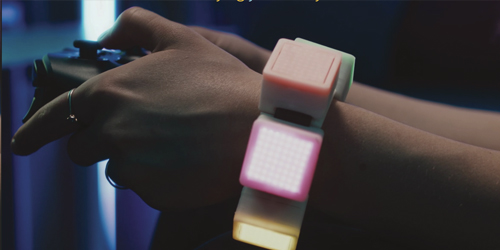
- Shiva Jabari, Asif Shaikh, Çağlar Genç, et al. -
IJHCI Full Paper [h5-index: 54, impact factor: 4.7]
@article{wearablereview2023ijhci, author = {Jabari, Shiva and Shaikh, Asif and Genç, Çağlar and Buruk, Oğuz ‘Oz’ and Virkki, Johanna and Hamari, Juho}, abstract = {Computational wearables are redefining our presence in the world and transforming our lifestyles by engendering a seamless connection between the wearer and the worn. Despite numerous original studies on the development as well as the current advances of wearables, a systematic review from the standpoint of fashion seems to be lacking. Thus, this systematic review aimed to explore the current state of research on computational fashion in wearables’ literature in terms of the key domains, theoretical models, materials, interaction modalities, and existing gaps. To this aim, the authors built a search string based on the keywords in related topics and conducted the research using Scopus databases. As a result, a total of 4777 papers between January 1990 to August 2021 were screened and 82 research study papers finally passed the inclusion-exclusion criteria for the purpose of the review. The results display: first, computational wearables’ studies are becoming more inclined towards the aesthetic aspects of fashion wearables; second, although the functional aspects of the design processes received more attention, embodiment was the most discussed theory in the included studies; third, the extensive application of fabric implied the need for new fabrics with both smart quality and flexibility to afford aesthetic aspects; fourth, ambient data as input modalities received extensive attention in fashion wearables; fifth, kinetic output modalities as novel modes of fashion expression are becoming as prevalent as visual modalities. Finally, our findings provide a detailed overview of distinct facets of studies on computational fashion and a future research agenda for researchers and designers working on fashion and wearables.}, title = {A Systematic Literature Review on Computational Fashion Wearables}, journal = {International Journal of Human–Computer Interaction}, pages = {1-28}, year = {2023}, publisher = {Taylor & Francis}, doi = {10.1080/10447318.2023.2269007} }
Shiva Jabari, Asif Shaikh, Çağlar Genç, Oğuz ‘Oz’ Buruk, Johanna Virkki and Juho Hamari. 2023. A Systematic Literature Review on Computational Fashion Wearables. International Journal of Human–Computer Interaction: 1-28. https://doi.org/10.1080/10447318.2023.2269007
Jabari, S., Shaikh, A., Genç, Ç., Buruk, O., Virkki, J., & Hamari, J. (2023). A Systematic Literature Review on Computational Fashion Wearables. International Journal of Human–Computer Interaction 1-28. https://doi.org/10.1080/10447318.2023.2269007
Jabari, Shiva et al. "A Systematic Literature Review on Computational Fashion Wearables." International Journal of Human–Computer Interaction, 2023, pp. 1-28. https://doi.org/10.1080/10447318.2023.2269007
Jabari, S., Shaikh, A., Genç, Ç., Buruk, O., Virkki, J., and Hamari, J. (2023). ‘A Systematic Literature Review on Computational Fashion Wearables’, International Journal of Human–Computer Interaction p. 1-28. Taylor & Francis, https://doi.org/10.1080/10447318.2023.2269007
Jabari S, Shaikh A, Genç Ç, Buruk O, Virkki J, Hamari J. A Systematic Literature Review on Computational Fashion Wearables. International Journal of Human–Computer Interaction. 2023: p. 1-28. Available from: https://doi.org/10.1080/10447318.2023.2269007
Jabari, Shiva, Asif Shaikh, Çağlar Genç, Oğuz ‘Oz’ Buruk, Johanna Virkki, and Juho Hamari. "A Systematic Literature Review on Computational Fashion Wearables." International Journal of Human–Computer InteractionTaylor & Francis, (2023): 1-28. https://doi.org/10.1080/10447318.2023.2269007
JABARI, S.; SHAIKH, A.; GENç, Ç.; BURUK, O.; VIRKKI, J.; HAMARI, J. A Systematic Literature Review on Computational Fashion Wearables. International Journal of Human–Computer Interaction Taylor & Francis, 2023. 1-28. https://doi.org/10.1080/10447318.2023.2269007

- Oğuz ‘Oz’ Buruk, Louise P. Matjeka, Floyd Mueller -
CHI '23 Full Paper [h5-index: 129]
[acceptance rate: 28%]
@inproceedings{extensions2023chi, title = {Towards Designing Playful Bodily Extensions: Learning from Expert Interviews}, author = {Buruk, Oğuz ‘Oz’ and Matjeka, Louise Petersen and Mueller, Florian ‘Floyd’}, abstract = {Interactive technologies offer novel opportunities for physically extending our bodies, with the most prominent examples being prosthetics along with systems emerging from the wearables community. However, most such systems appear to focus on instrumental benefits, missing out on the opportunity to use bodily extensions for play and its associated benefits (including a lower adoption barrier and the potential to reveal a broader understanding of such technologies). To begin understanding the design of playful bodily extensions, we interviewed five designers of bodily extensions that have been showcased in prestigious academic venues or turned into commercial products. Here we present themes and actionable advice from these interviews for the design of playful bodily extensions through a thematic analysis. Our work aims to support the design of future playful bodily extensions while promoting the experiential qualities of bodily extension design, with the ultimate goal of bringing more playful experiences to people’s lives.}, year = {2023}, isbn = {9781450394215}, publisher = {Association for Computing Machinery}, address = {New York, NY, USA}, doi = {10.1145/3544548.3581165}, booktitle = {Proceedings of the 2023 CHI Conference on Human Factors in Computing Systems}, articleno = {233}, numpages = {20}, carousel = {4}, keywords = {Expert Interviews, Cyborg, Posthuman, Play, Wearables, Bodily Extensions, Transhuman, Thematic Analysis, Games}, location = {Hamburg, Germany}, series = {CHI '23} }
Oğuz ‘Oz’ Buruk, Louise Petersen Matjeka and Florian ‘Floyd’ Mueller. 2023. Towards Designing Playful Bodily Extensions: Learning from Expert Interviews. In Proceedings of the 2023 CHI Conference on Human Factors in Computing Systems (CHI '23). Association for Computing Machinery, New York, NY, USA, Article 233, 20 pages. https://doi.org/10.1145/3544548.3581165
Buruk, O., Matjeka, L. P., & Mueller, F. (2023). Towards Designing Playful Bodily Extensions: Learning from Expert Interviews. In Proceedings of the 2023 CHI Conference on Human Factors in Computing Systems (CHI '23). Article 233, pp. 1-20. New York, NY, USA, Association for Computing Machinery, https://doi.org/10.1145/3544548.3581165
Buruk, Oğuz ‘Oz’ et al. "Towards Designing Playful Bodily Extensions: Learning from Expert Interviews." In Proceedings of the 2023 CHI Conference on Human Factors in Computing Systems (CHI '23), New York, NY, USA, Association for Computing Machinery, 2023, Article 233, pp. 1-20. https://doi.org/10.1145/3544548.3581165
Buruk, O., Matjeka, L. P., and Mueller, F. (2023). ‘Towards Designing Playful Bodily Extensions: Learning from Expert Interviews’, In Proceedings of the 2023 CHI Conference on Human Factors in Computing Systems (CHI '23), Article 233, p. 1-20. New York, NY, USA: Association for Computing Machinery, https://doi.org/10.1145/3544548.3581165
Buruk O, Matjeka LP, Mueller F. Towards Designing Playful Bodily Extensions: Learning from Expert Interviews. In: Proceedings of the 2023 CHI Conference on Human Factors in Computing Systems (CHI '23). New York, NY, USA: Association for Computing Machinery; 2023. Article 233 p. 1-20. Available from: https://doi.org/10.1145/3544548.3581165
Buruk, Oğuz ‘Oz’, Louise Petersen Matjeka, and Florian ‘Floyd’ Mueller. "Towards Designing Playful Bodily Extensions: Learning from Expert Interviews." In Proceedings of the 2023 CHI Conference on Human Factors in Computing Systems (CHI '23), New York, NY, USA, Association for Computing Machinery, (2023): Article 233,1-20. https://doi.org/10.1145/3544548.3581165
BURUK, O.; MATJEKA, L. P.; MUELLER, F. Towards Designing Playful Bodily Extensions: Learning from Expert Interviews. In: Proceedings of the 2023 CHI Conference on Human Factors in Computing Systems (CHI '23). New York, NY, USA: Association for Computing Machinery, 2023. Article 233, pp. 1-20. https://doi.org/10.1145/3544548.3581165
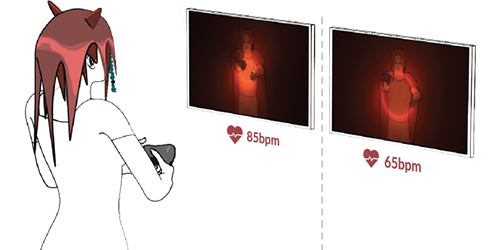
- Oğuz ‘Oz’ Buruk, Mikko Salminen, Nannan Xi, et al. -
CHI '21 Full Paper [h5-index: 129]
[acceptance rate: 27%]
@inproceedings{towardswearables2021chi, author = {Buruk, Oğuz ‘Oz’ and Salminen, Mikko and Xi, Nannan and Nummenmaa, Timo and Hamari, Juho}, title = {Towards the Next Generation of Gaming Wearables}, year = {2021}, isbn = {9781450380966}, publisher = {Association for Computing Machinery}, address = {New York, NY, USA}, url = {https://doi.org/10.1145/3411764.3445785}, doi = {10.1145/3411764.3445785}, abstract = {Recent studies on gaming wearables show that wearables can contribute to the gaming experience by bolstering performativity, facilitating social interaction, and accommodating distinct interaction modalities. Still, these studies focused on contexts such as role-playing, casual, or festival games. Stakeholder-oriented research that explores the integration of wearables for mainstream gaming platforms such as game consoles is scarce. To fill this gap, we have conducted an exploratory study through 6 participatory design workshops focusing on different aspects of wearables with 33 participants from different stakeholders. As a result, we have created fifteen design themes and three gaming wearable concepts that led to seven actionable design implications which can be adopted by designers and researchers for designing gaming wearables.}, booktitle = {Proceedings of the 2021 CHI Conference on Human Factors in Computing Systems}, articleno = {444}, numpages = {15}, keywords = {RPG, LARP, Social Interaction, Game Research, Bioadaptive, Role Playing, Wearables, Movement-Based Games, Virtual Reality, Costuming, Game Controllers}, location = {Yokohama, Japan}, series = {CHI '21} }
Oğuz ‘Oz’ Buruk, Mikko Salminen, Nannan Xi, Timo Nummenmaa and Juho Hamari. 2021. Towards the Next Generation of Gaming Wearables. In Proceedings of the 2021 CHI Conference on Human Factors in Computing Systems (CHI '21). Association for Computing Machinery, New York, NY, USA, Article 444, 15 pages. https://doi.org/10.1145/3411764.3445785
Buruk, O., Salminen, M., Xi, N., Nummenmaa, T., & Hamari, J. (2021). Towards the Next Generation of Gaming Wearables. In Proceedings of the 2021 CHI Conference on Human Factors in Computing Systems (CHI '21). Article 444, pp. 1-15. New York, NY, USA, Association for Computing Machinery, https://doi.org/10.1145/3411764.3445785
Buruk, Oğuz ‘Oz’ et al. "Towards the Next Generation of Gaming Wearables." In Proceedings of the 2021 CHI Conference on Human Factors in Computing Systems (CHI '21), New York, NY, USA, Association for Computing Machinery, 2021, Article 444, pp. 1-15. https://doi.org/10.1145/3411764.3445785
Buruk, O., Salminen, M., Xi, N., Nummenmaa, T., and Hamari, J. (2021). ‘Towards the Next Generation of Gaming Wearables’, In Proceedings of the 2021 CHI Conference on Human Factors in Computing Systems (CHI '21), Article 444, p. 1-15. New York, NY, USA: Association for Computing Machinery, https://doi.org/10.1145/3411764.3445785
Buruk O, Salminen M, Xi N, Nummenmaa T, Hamari J. Towards the Next Generation of Gaming Wearables. In: Proceedings of the 2021 CHI Conference on Human Factors in Computing Systems (CHI '21). New York, NY, USA: Association for Computing Machinery; 2021. Article 444 p. 1-15. Available from: https://doi.org/10.1145/3411764.3445785
Buruk, Oğuz ‘Oz’, Mikko Salminen, Nannan Xi, Timo Nummenmaa, and Juho Hamari. "Towards the Next Generation of Gaming Wearables." In Proceedings of the 2021 CHI Conference on Human Factors in Computing Systems (CHI '21), New York, NY, USA, Association for Computing Machinery, (2021): Article 444,1-15. https://doi.org/10.1145/3411764.3445785
BURUK, O.; SALMINEN, M.; XI, N.; NUMMENMAA, T.; HAMARI, J. Towards the Next Generation of Gaming Wearables. In: Proceedings of the 2021 CHI Conference on Human Factors in Computing Systems (CHI '21). New York, NY, USA: Association for Computing Machinery, 2021. Article 444, pp. 1-15. https://doi.org/10.1145/3411764.3445785
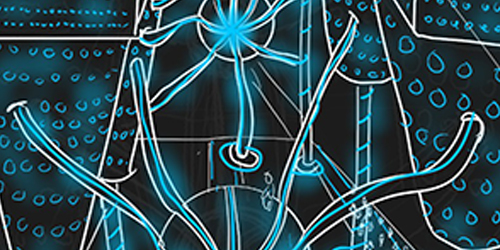
- Mattia Thibault, Oğuz ‘Oz’ Buruk, Seda Suman et al. -
DIS '20 Full Paper [h5-index: 31]
[acceptance rate: 24%]
@inproceedings{transurban2020dis, author = {Thibault, Mattia and Buruk, Oğuz ‘Oz’ and Buruk, Seda Suman and Hamari, Juho}, title = {Transurbanism: Smart Cities for Transhumans}, year = {2020}, isbn = {9781450369749}, publisher = {Association for Computing Machinery}, address = {New York, NY, USA}, url = {https://doi.org/10.1145/3357236.3395523}, doi = {10.1145/3357236.3395523}, abstract = {The current trends related to 'smart cities' are bringing the cityscapes of movies such as Blade Runner and Cyberpunk 2077 closer to our immediate reality. The question of what will the cities of the future look like is at the heart of urban studies. In parallel, a similar question is posed by (trans)humanists about the future of humanity and its possible technological enhancements. However, (trans)humanity and future cities are defined in a bi-directional dependency. Therefore, we have to answer the questions of future humans and cities simultaneously. This paper maps several ways of interacting between transhuman communities and smart cities to understand their possible effects on governing, design and society at large resulting in a framework that will work as a cautionary tale and an inspirational blueprint for imagining future urbanity.}, booktitle = {Proceedings of the 2020 ACM Designing Interactive Systems Conference}, pages = {1915–1928}, keywords = {smart cities, transhumanism, design fiction, design speculation}, location = {Eindhoven, Netherlands}, series = {DIS '20} }
Mattia Thibault, Oğuz ‘Oz’ Buruk, Seda Suman Buruk and Juho Hamari. 2020. Transurbanism: Smart Cities for Transhumans. In Proceedings of the 2020 ACM Designing Interactive Systems Conference (DIS '20). Association for Computing Machinery, New York, NY, USA, 1915–1928. https://doi.org/10.1145/3357236.3395523
Thibault, M., Buruk, O., Buruk, S. S., & Hamari, J. (2020). Transurbanism: Smart Cities for Transhumans. In Proceedings of the 2020 ACM Designing Interactive Systems Conference (DIS '20). pp. 1915–1928. New York, NY, USA, Association for Computing Machinery, https://doi.org/10.1145/3357236.3395523
Thibault, Mattia et al. "Transurbanism: Smart Cities for Transhumans." In Proceedings of the 2020 ACM Designing Interactive Systems Conference (DIS '20), New York, NY, USA, Association for Computing Machinery, 2020, pp. 1915–1928. https://doi.org/10.1145/3357236.3395523
Thibault, M., Buruk, O., Buruk, S. S., and Hamari, J. (2020). ‘Transurbanism: Smart Cities for Transhumans’, In Proceedings of the 2020 ACM Designing Interactive Systems Conference (DIS '20), p. 1915–1928. New York, NY, USA: Association for Computing Machinery, https://doi.org/10.1145/3357236.3395523
Thibault M, Buruk O, Buruk SS, Hamari J. Transurbanism: Smart Cities for Transhumans. In: Proceedings of the 2020 ACM Designing Interactive Systems Conference (DIS '20). New York, NY, USA: Association for Computing Machinery; 2020. p. 1915–1928. Available from: https://doi.org/10.1145/3357236.3395523
Thibault, Mattia, Oğuz ‘Oz’ Buruk, Seda Suman Buruk, and Juho Hamari. "Transurbanism: Smart Cities for Transhumans." In Proceedings of the 2020 ACM Designing Interactive Systems Conference (DIS '20), New York, NY, USA, Association for Computing Machinery, (2020): 1915–1928. https://doi.org/10.1145/3357236.3395523
THIBAULT, M.; BURUK, O.; BURUK, S. S.; HAMARI, J. Transurbanism: Smart Cities for Transhumans. In: Proceedings of the 2020 ACM Designing Interactive Systems Conference (DIS '20). New York, NY, USA: Association for Computing Machinery, 2020. pp. 1915–1928. https://doi.org/10.1145/3357236.3395523
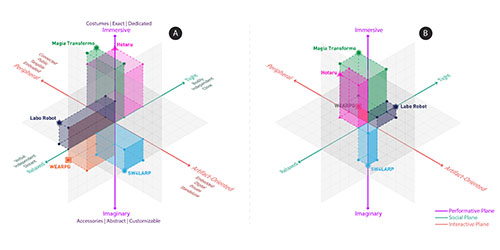
- Oğuz ‘Oz’ Buruk, K. Isbister, Tess Tanenbaum -
FDG '19 Full Paper [h5-index: 20]
[acceptance rate: 37%]
@inproceedings{design2019fdg, author = {Buruk, Oğuz ‘Oz’ and Isbister, Katherine and Tanenbaum, Theresa Jean}, title = {A Design Framework for Playful Wearables}, year = {2019}, isbn = {9781450372176}, publisher = {Association for Computing Machinery}, address = {New York, NY, USA}, url = {https://doi.org/10.1145/3337722.3337733}, doi = {10.1145/3337722.3337733}, abstract = {Deployment of wearables for games has attracted the interest of designers and researchers both in academia and industry. However, few of these projects treat wearables as an integral part of the gameplay, often considering them as an extension of the central on-screen experience. While preliminary forays into wearable play show promise, we see a need for a rigorous design framework to illuminate the possibilities for the future of wearables for playful interaction design. In this paper we propose a Design Framework for Playful Wearables stemming from our extensive research and hands-on experience in leading four long-term game research projects incorporating wearables. We divide our framework into three high-level categories: the performative, the social and the interactive. We contend that this design space can be both a design tool for creators of wearable playful activities, as well as an analytical lens for evaluating existing wearable systems.}, booktitle = {Proceedings of the 14th International Conference on the Foundations of Digital Games}, articleno = {19}, numpages = {12}, keywords = {movement-based games, wearables, playful interaction, LARP, RPG, game research, role playing, costuming}, location = {San Luis Obispo, California, USA}, series = {FDG '19} }
Oğuz ‘Oz’ Buruk, Katherine Isbister and Theresa Jean Tanenbaum. 2019. A Design Framework for Playful Wearables. In Proceedings of the 14th International Conference on the Foundations of Digital Games (FDG '19). Association for Computing Machinery, New York, NY, USA, Article 19, 12 pages. https://doi.org/10.1145/3337722.3337733
Buruk, O., Isbister, K., & Tanenbaum, T. J. (2019). A Design Framework for Playful Wearables. In Proceedings of the 14th International Conference on the Foundations of Digital Games (FDG '19). Article 19, pp. 1-12. New York, NY, USA, Association for Computing Machinery, https://doi.org/10.1145/3337722.3337733
Buruk, Oğuz ‘Oz’ et al. "A Design Framework for Playful Wearables." In Proceedings of the 14th International Conference on the Foundations of Digital Games (FDG '19), New York, NY, USA, Association for Computing Machinery, 2019, Article 19, pp. 1-12. https://doi.org/10.1145/3337722.3337733
Buruk, O., Isbister, K., and Tanenbaum, T. J. (2019). ‘A Design Framework for Playful Wearables’, In Proceedings of the 14th International Conference on the Foundations of Digital Games (FDG '19), Article 19, p. 1-12. New York, NY, USA: Association for Computing Machinery, https://doi.org/10.1145/3337722.3337733
Buruk O, Isbister K, Tanenbaum TJ. A Design Framework for Playful Wearables. In: Proceedings of the 14th International Conference on the Foundations of Digital Games (FDG '19). New York, NY, USA: Association for Computing Machinery; 2019. Article 19 p. 1-12. Available from: https://doi.org/10.1145/3337722.3337733
Buruk, Oğuz ‘Oz’, Katherine Isbister, and Theresa Jean Tanenbaum. "A Design Framework for Playful Wearables." In Proceedings of the 14th International Conference on the Foundations of Digital Games (FDG '19), New York, NY, USA, Association for Computing Machinery, (2019): Article 19,1-12. https://doi.org/10.1145/3337722.3337733
BURUK, O.; ISBISTER, K.; TANENBAUM, T. J. A Design Framework for Playful Wearables. In: Proceedings of the 14th International Conference on the Foundations of Digital Games (FDG '19). New York, NY, USA: Association for Computing Machinery, 2019. Article 19, pp. 1-12. https://doi.org/10.1145/3337722.3337733
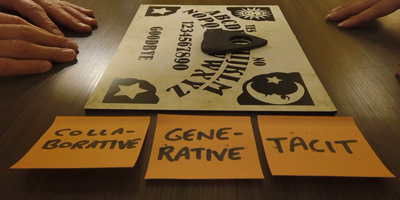
- Ahmet Börütecene, Oğuz ‘Oz’ Buruk, -
HTTF 2019 Short Paper
[acceptance rate: 52%%]
@inproceedings{ouija2019httf, author = {Börütecene, Ahmet and Buruk, Oğuz ‘Oz’}, title = {Otherworld: Ouija Board as a Resource for Design}, year = {2019}, isbn = {9781450372039}, publisher = {Association for Computing Machinery}, address = {New York, NY, USA}, url = {https://doi.org/10.1145/3363384.3363388}, doi = {10.1145/3363384.3363388}, abstract = {The Ouija board is a device to contact spirits from the so-called otherworld. Although it is considered paranormal activity, the way it works rests on ideomotor actions and we argue that the Ouija is a resource for design for the following aspects: It is a 1) collective tangible exploration tool operated by two or more people through a physical pointer that moves, seemingly on its own, around the letters to probe meanings by composing messages. It has been used by artists as a medium offering 2) creative stimulation to generate material and develop ideas for their work. The Ouija also enables people to express nonconscious knowledge, as research suggests, and thus can provide 3) access to tacit dimension. In this paper, we present the Otherworld Framework that describes its principal elements and provide speculations on how to exploit them in design for collaborative, engaging and unconventional group interactions.}, booktitle = {Proceedings of the Halfway to the Future Symposium 2019}, articleno = {4}, numpages = {4}, keywords = {automatism, nonconscious, participatory design, ideomotor, design research, tacit knowledge, ouija, co-design, VR, ideation, creativity, wearable, paranormal, decision making}, location = {Nottingham, United Kingdom}, series = {HTTF 2019} }
Ahmet Börütecene and Oğuz ‘Oz’ Buruk. 2019. Otherworld: Ouija Board as a Resource for Design. In Proceedings of the Halfway to the Future Symposium 2019 (HTTF 2019). Association for Computing Machinery, New York, NY, USA, Article 4, 4 pages. https://doi.org/10.1145/3363384.3363388
Börütecene, A., & Buruk, O. (2019). Otherworld: Ouija Board as a Resource for Design. In Proceedings of the Halfway to the Future Symposium 2019 (HTTF 2019). Article 4, pp. 1-4. New York, NY, USA, Association for Computing Machinery, https://doi.org/10.1145/3363384.3363388
Börütecene, Ahmet and Oğuz ‘Oz’ Buruk."Otherworld: Ouija Board as a Resource for Design." In Proceedings of the Halfway to the Future Symposium 2019 (HTTF 2019), New York, NY, USA, Association for Computing Machinery, 2019, Article 4, pp. 1-4. https://doi.org/10.1145/3363384.3363388
Börütecene, A., and Buruk, O. (2019). ‘Otherworld: Ouija Board as a Resource for Design’, In Proceedings of the Halfway to the Future Symposium 2019 (HTTF 2019), Article 4, p. 1-4. New York, NY, USA: Association for Computing Machinery, https://doi.org/10.1145/3363384.3363388
Börütecene A, Buruk O. Otherworld: Ouija Board as a Resource for Design. In: Proceedings of the Halfway to the Future Symposium 2019 (HTTF 2019). New York, NY, USA: Association for Computing Machinery; 2019. Article 4 p. 1-4. Available from: https://doi.org/10.1145/3363384.3363388
Börütecene, Ahmet, and Oğuz ‘Oz’ Buruk. "Otherworld: Ouija Board as a Resource for Design." In Proceedings of the Halfway to the Future Symposium 2019 (HTTF 2019), New York, NY, USA, Association for Computing Machinery, (2019): Article 4,1-4. https://doi.org/10.1145/3363384.3363388
BöRüTECENE, A.; BURUK, O. Otherworld: Ouija Board as a Resource for Design. In: Proceedings of the Halfway to the Future Symposium 2019 (HTTF 2019). New York, NY, USA: Association for Computing Machinery, 2019. Article 4, pp. 1-4. https://doi.org/10.1145/3363384.3363388
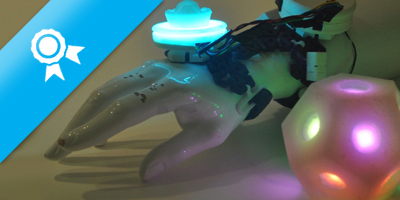
- Oğuz ‘Oz’ Buruk, Oğuzhan Özcan, -
CHI '18 Full Paper [h5-index: 129]
[acceptance rate: 23%]
@inproceedings{extracting2018chi, author = {Buruk, Oğuz ‘Oz’ and Özcan, Oğuzhan}, title = {Extracting Design Guidelines for Wearables and Movement in Tabletop Role-Playing Games via a Research Through Design Process}, year = {2018}, isbn = {9781450356206}, publisher = {Association for Computing Machinery}, address = {New York, NY, USA}, url = {https://doi.org/10.1145/3173574.3174087}, doi = {10.1145/3173574.3174087}, abstract = {We believe that wearables and movement are perfect fit for enhancing tabletop role-playing (TTRPG) experience, since they can provide embodied interaction, are perceived as character-costumes, enhance ludic properties and increase the connectedness to the imaginary game worlds. By providing these improvements, they can increase the immersiveness and player/character relationship which are critical for an ideal TTRPG experience. To investigate this underexplored area, we conducted an extensive research through design process which includes a (1) participatory design workshop with 25 participants, (2) preliminary user tests with Wizard-of-Oz and experience prototypes with 15 participants, (3) production of a new game system, wearable and tangible artifacts and (4) summative user tests for understanding the effects on experience with 16 participants. As a result of our study, we extracted design guidelines about how to integrate wearables and movement in narrative-based tabletop games and communicate how the results of each phase affected our artifacts.}, booktitle = {Proceedings of the 2018 CHI Conference on Human Factors in Computing Systems}, pages = {1–13}, keywords = {participatory design, tangible interfaces, game research, guidelines, pnprpg, exertion games, wearable computing, role playing games, game design}, location = {Montreal QC, Canada}, series = {CHI '18} }
Oğuz ‘Oz’ Buruk and Oğuzhan Özcan. 2018. Extracting Design Guidelines for Wearables and Movement in Tabletop Role-Playing Games via a Research Through Design Process. In Proceedings of the 2018 CHI Conference on Human Factors in Computing Systems (CHI '18). Association for Computing Machinery, New York, NY, USA, 1–13. https://doi.org/10.1145/3173574.3174087
Buruk, O., & Özcan, O. (2018). Extracting Design Guidelines for Wearables and Movement in Tabletop Role-Playing Games via a Research Through Design Process. In Proceedings of the 2018 CHI Conference on Human Factors in Computing Systems (CHI '18). pp. 1–13. New York, NY, USA, Association for Computing Machinery, https://doi.org/10.1145/3173574.3174087
Buruk, Oğuz ‘Oz’ and Oğuzhan Özcan."Extracting Design Guidelines for Wearables and Movement in Tabletop Role-Playing Games via a Research Through Design Process." In Proceedings of the 2018 CHI Conference on Human Factors in Computing Systems (CHI '18), New York, NY, USA, Association for Computing Machinery, 2018, pp. 1–13. https://doi.org/10.1145/3173574.3174087
Buruk, O., and Özcan, O. (2018). ‘Extracting Design Guidelines for Wearables and Movement in Tabletop Role-Playing Games via a Research Through Design Process’, In Proceedings of the 2018 CHI Conference on Human Factors in Computing Systems (CHI '18), p. 1–13. New York, NY, USA: Association for Computing Machinery, https://doi.org/10.1145/3173574.3174087
Buruk O, Özcan O. Extracting Design Guidelines for Wearables and Movement in Tabletop Role-Playing Games via a Research Through Design Process. In: Proceedings of the 2018 CHI Conference on Human Factors in Computing Systems (CHI '18). New York, NY, USA: Association for Computing Machinery; 2018. p. 1–13. Available from: https://doi.org/10.1145/3173574.3174087
Buruk, Oğuz ‘Oz’, and Oğuzhan Özcan. "Extracting Design Guidelines for Wearables and Movement in Tabletop Role-Playing Games via a Research Through Design Process." In Proceedings of the 2018 CHI Conference on Human Factors in Computing Systems (CHI '18), New York, NY, USA, Association for Computing Machinery, (2018): 1–13. https://doi.org/10.1145/3173574.3174087
BURUK, O.; ÖZCAN, O. Extracting Design Guidelines for Wearables and Movement in Tabletop Role-Playing Games via a Research Through Design Process. In: Proceedings of the 2018 CHI Conference on Human Factors in Computing Systems (CHI '18). New York, NY, USA: Association for Computing Machinery, 2018. pp. 1–13. https://doi.org/10.1145/3173574.3174087
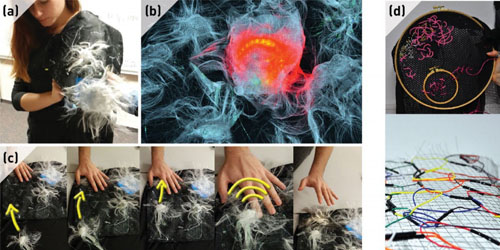
- Çağlar Genç, Oğuz ‘Oz’ Buruk, O. Özcan et al. -
IJ Design Full Paper [h5-index: 22, impact factor: 2.27]
@article{fashion2018ijd, author = {Genç, Çağlar and Buruk, Oğuz ‘Oz’ and Özcan, Oğuzhan and Yılmaz, Sejda Inal and Can, Kemal}, title ={Exploring Computational Materials as Fashion Materials: Recommendations for Designing Fashionable Wearables}, journal = {International Journal of Design}, volume = {12}, number = {3}, year = {2018}, url = {http://www.ijdesign.org/index.php/IJDesign/article/view/2831}, publisher = {International Journal of Design}, abstract = {Fashion is becoming an inevitable part of the wearable devices. Yet, it is not clear how the cross-pollination between computational and fashion materials might suggest directions for wearables. We believe exploring this territory is important for providing actionable directions to the designers and engineers. Therefore, we followed a two-pillared research through design method: (1) a design workshop with 14 fashion design and 6 engineering students where they created 7 artifacts by exploring computational and fashion materials and (2) semi-structured interviews with 10 wearable design experts from different countries, in which discussed our analysis on the workshop outcomes. After we refined our findings with the feedbacks of the experts we came up with 5 design recommendations for designers along with the strategies that they can follow for applying them. This kind of recommendations, achieved through an examinations that bridges fashion design and computational materials by also considering expert opinions, was not implemented before. In this respect, our recommendations are shaped up as follows: (1) Giving information through fabric augmentation, (2) defining bi-directional interaction between the contexts and garments, (3) controlling the form of the garments, (4) treating surfaces, and (5) supporting the three dimensional shape of the garment with computational materials.}, pages = {1-19} }
Çağlar Genç, Oğuz ‘Oz’ Buruk, Oğuzhan Özcan, Sejda Inal Yılmaz and Kemal Can. 2018. Exploring Computational Materials as Fashion Materials: Recommendations for Designing Fashionable Wearables. International Journal of Design 12, 3: 1-19. http://www.ijdesign.org/index.php/IJDesign/article/view/2831
Genç, Ç., Buruk, O., Özcan, O., Yılmaz, S. I., & Can, K. (2018). Exploring Computational Materials as Fashion Materials: Recommendations for Designing Fashionable Wearables. International Journal of Design 12(3), 1-19. http://www.ijdesign.org/index.php/IJDesign/article/view/2831
Genç, Çağlar et al. "Exploring Computational Materials as Fashion Materials: Recommendations for Designing Fashionable Wearables." International Journal of Design, vol. 12 no. 3, 2018, pp. 1-19. http://www.ijdesign.org/index.php/IJDesign/article/view/2831
Genç, Ç., Buruk, O., Özcan, O., Yılmaz, S. I., and Can, K. (2018). ‘Exploring Computational Materials as Fashion Materials: Recommendations for Designing Fashionable Wearables’, International Journal of Design 12, p. 1-19. International Journal of Design, http://www.ijdesign.org/index.php/IJDesign/article/view/2831
Genç Ç, Buruk O, Özcan O, Yılmaz SI, Can K. Exploring Computational Materials as Fashion Materials: Recommendations for Designing Fashionable Wearables. International Journal of Design. 2018:12(3) p. 1-19. Available from: http://www.ijdesign.org/index.php/IJDesign/article/view/2831
Genç, Çağlar, Oğuz ‘Oz’ Buruk, Oğuzhan Özcan, Sejda Inal Yılmaz, and Kemal Can. "Exploring Computational Materials as Fashion Materials: Recommendations for Designing Fashionable Wearables." International Journal of Design 12, no. 3International Journal of Design, (2018): 1-19. http://www.ijdesign.org/index.php/IJDesign/article/view/2831
GENç, Ç.; BURUK, O.; ÖZCAN, O.; YıLMAZ, S. I.; CAN, K. Exploring Computational Materials as Fashion Materials: Recommendations for Designing Fashionable Wearables. International Journal of Design International Journal of Design, 2018. 12(3), 1-19. http://www.ijdesign.org/index.php/IJDesign/article/view/2831
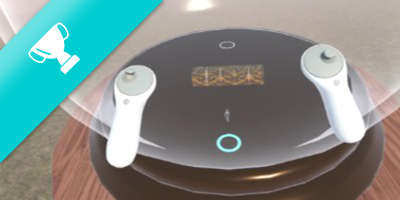
- D. Bosman, R. Tordiffe, Oğuz ‘Oz’. Buruk et al. -
CHI PLAY Companion '24 (SGDC Finalist)
[h5-index: 31, acceptance rate: 53%]
@inproceedings{soundtrek2024chiplay, author = {Bosman, Isak de Villiers and Tordiffe, Ross and Huang, Tianyou 'Jackie' and Buruk, Oğuz ‘Oz’ and Jørgensen, Kristine and Hamari, Juho}, title = {SoundTrek: A Virtual Reality Audio Perspective-Switching Game}, year = {2024}, isbn = {9798400706929}, publisher = {Association for Computing Machinery}, address = {New York, NY, USA}, url = {https://doi.org/10.1145/3665463.3678824}, doi = {10.1145/3665463.3678824}, abstract = {Virtual reality technologies allow new ways of creating a sense of space not only through sight but also through sound. We present SoundTrek, a game about using listening perspective for navigating through environments in VR. In SoundTrek, the player needs to switch between listening to spatialized sounds from the first- and third-person perspectives to navigate through obstacles. SoundTrek also employs sound design strategies, such as spatialized soundtracks and near-field audio to aid spatial navigation in the absence of visual cues and to create unique aesthetic experiences through sound. We present new ways of utilizing sound in virtual reality game design that highlights design considerations for audio-focused gameplay and diversifies the opportunities for creating rich, interactive soundscapes.}, booktitle = {Companion Proceedings of the 2024 Annual Symposium on Computer-Human Interaction in Play}, pages = {352–358}, keywords = {audio, game design, perspective, virtual reality}, location = {Tampere, Finland}, series = {CHI PLAY Companion '24} }
Isak de Villiers Bosman, Ross Tordiffe, Tianyou 'Jackie' Huang, Oğuz ‘Oz’ Buruk, Kristine Jørgensen and Juho Hamari. 2024. SoundTrek: A Virtual Reality Audio Perspective-Switching Game. In Companion Proceedings of the 2024 Annual Symposium on Computer-Human Interaction in Play (CHI PLAY Companion '24). Association for Computing Machinery, New York, NY, USA, 352–358. https://doi.org/10.1145/3665463.3678824
Bosman, I. d. V., Tordiffe, R., Huang, T. '., Buruk, O., Jørgensen, K., & Hamari, J. (2024). SoundTrek: A Virtual Reality Audio Perspective-Switching Game. In Companion Proceedings of the 2024 Annual Symposium on Computer-Human Interaction in Play (CHI PLAY Companion '24). pp. 352–358. New York, NY, USA, Association for Computing Machinery, https://doi.org/10.1145/3665463.3678824
Bosman, Isak d. V. et al. "SoundTrek: A Virtual Reality Audio Perspective-Switching Game." In Companion Proceedings of the 2024 Annual Symposium on Computer-Human Interaction in Play (CHI PLAY Companion '24), New York, NY, USA, Association for Computing Machinery, 2024, pp. 352–358. https://doi.org/10.1145/3665463.3678824
Bosman, I. d. V., Tordiffe, R., Huang, T. '., Buruk, O., Jørgensen, K., and Hamari, J. (2024). ‘SoundTrek: A Virtual Reality Audio Perspective-Switching Game’, In Companion Proceedings of the 2024 Annual Symposium on Computer-Human Interaction in Play (CHI PLAY Companion '24), p. 352–358. New York, NY, USA: Association for Computing Machinery, https://doi.org/10.1145/3665463.3678824
Bosman IdV, Tordiffe R, Huang T', Buruk O, Jørgensen K, Hamari J. SoundTrek: A Virtual Reality Audio Perspective-Switching Game. In: Companion Proceedings of the 2024 Annual Symposium on Computer-Human Interaction in Play (CHI PLAY Companion '24). New York, NY, USA: Association for Computing Machinery; 2024. p. 352–358. Available from: https://doi.org/10.1145/3665463.3678824
Bosman, Isak d. V., Ross Tordiffe, Tianyou 'Jackie' Huang, Oğuz ‘Oz’ Buruk, Kristine Jørgensen, and Juho Hamari. "SoundTrek: A Virtual Reality Audio Perspective-Switching Game." In Companion Proceedings of the 2024 Annual Symposium on Computer-Human Interaction in Play (CHI PLAY Companion '24), New York, NY, USA, Association for Computing Machinery, (2024): 352–358. https://doi.org/10.1145/3665463.3678824
BOSMAN, I. d. V.; TORDIFFE, R.; HUANG, T. '.; BURUK, O.; JøRGENSEN, K.; HAMARI, J. SoundTrek: A Virtual Reality Audio Perspective-Switching Game. In: Companion Proceedings of the 2024 Annual Symposium on Computer-Human Interaction in Play (CHI PLAY Companion '24). New York, NY, USA: Association for Computing Machinery, 2024. pp. 352–358. https://doi.org/10.1145/3665463.3678824

- Çağlar Genç, Oğuz ‘Oz’ Buruk, Ferran A. Bertran -
CHI PLAY Companion '24 (Work in Progress)
[h5-index: 31, acceptance rate: 44%]
@inproceedings{shroom2024chiplay, author = {Genç, Çağlar and Altarriba Bertran, Ferran and Buruk, Oğuz ‘Oz’ and Jung, Sangwon and Spors, Velvet and Hamari, Juho}, title = {Shroom Cards: Playful Exploration of Human Positionalities for More-than-Human Design}, year = {2024}, isbn = {9798400706929}, publisher = {Association for Computing Machinery}, address = {New York, NY, USA}, url = {https://doi.org/10.1145/3665463.3678784}, doi = {10.1145/3665463.3678784}, abstract = {This paper introduces Shroom Cards, a novel tool designed to engage with More-than-Human (MtH) design through playful exploration and reflection. Leveraging design cards and structured activities, Shroom Cards provides concrete starting points to practically engage with MtH approaches in design, such as embodying the roles and purposes of human and non-human entities. In this paper, we detail the design process, which includes Reflective Design Studio exercises to create positionality cards and incorporating playful strategies such as exploration, role-playing, and competition in the structured ideation and reflection activities. Initial testing of the Shroom Cards in an HCI design course students (N=23) shows that the cards and ideation activity effectively stimulate creative processes and diverse perspectives. However, challenges remain in fully adopting non-human viewpoints, suggesting that enhanced role-playing elements are needed for deeper engagement with non-human perspectives.}, booktitle = {Companion Proceedings of the 2024 Annual Symposium on Computer-Human Interaction in Play}, pages = {97–103}, keywords = {Cards, Design, More-than-Human, Playful, Positionalities}, location = {Tampere, Finland}, series = {CHI PLAY Companion '24} }
Çağlar Genç, Ferran Altarriba Bertran, Oğuz ‘Oz’ Buruk, Sangwon Jung, Velvet Spors and Juho Hamari. 2024. Shroom Cards: Playful Exploration of Human Positionalities for More-than-Human Design. In Companion Proceedings of the 2024 Annual Symposium on Computer-Human Interaction in Play (CHI PLAY Companion '24). Association for Computing Machinery, New York, NY, USA, 97–103. https://doi.org/10.1145/3665463.3678784
Genç, Ç., Altarriba Bertran, F., Buruk, O., Jung, S., Spors, V., & Hamari, J. (2024). Shroom Cards: Playful Exploration of Human Positionalities for More-than-Human Design. In Companion Proceedings of the 2024 Annual Symposium on Computer-Human Interaction in Play (CHI PLAY Companion '24). pp. 97–103. New York, NY, USA, Association for Computing Machinery, https://doi.org/10.1145/3665463.3678784
Genç, Çağlar et al. "Shroom Cards: Playful Exploration of Human Positionalities for More-than-Human Design." In Companion Proceedings of the 2024 Annual Symposium on Computer-Human Interaction in Play (CHI PLAY Companion '24), New York, NY, USA, Association for Computing Machinery, 2024, pp. 97–103. https://doi.org/10.1145/3665463.3678784
Genç, Ç., Altarriba Bertran, F., Buruk, O., Jung, S., Spors, V., and Hamari, J. (2024). ‘Shroom Cards: Playful Exploration of Human Positionalities for More-than-Human Design’, In Companion Proceedings of the 2024 Annual Symposium on Computer-Human Interaction in Play (CHI PLAY Companion '24), p. 97–103. New York, NY, USA: Association for Computing Machinery, https://doi.org/10.1145/3665463.3678784
Genç Ç, Altarriba Bertran F, Buruk O, Jung S, Spors V, Hamari J. Shroom Cards: Playful Exploration of Human Positionalities for More-than-Human Design. In: Companion Proceedings of the 2024 Annual Symposium on Computer-Human Interaction in Play (CHI PLAY Companion '24). New York, NY, USA: Association for Computing Machinery; 2024. p. 97–103. Available from: https://doi.org/10.1145/3665463.3678784
Genç, Çağlar, Ferran Altarriba Bertran, Oğuz ‘Oz’ Buruk, Sangwon Jung, Velvet Spors, and Juho Hamari. "Shroom Cards: Playful Exploration of Human Positionalities for More-than-Human Design." In Companion Proceedings of the 2024 Annual Symposium on Computer-Human Interaction in Play (CHI PLAY Companion '24), New York, NY, USA, Association for Computing Machinery, (2024): 97–103. https://doi.org/10.1145/3665463.3678784
GENç, Ç.; ALTARRIBA BERTRAN, F.; BURUK, O.; JUNG, S.; SPORS, V.; HAMARI, J. Shroom Cards: Playful Exploration of Human Positionalities for More-than-Human Design. In: Companion Proceedings of the 2024 Annual Symposium on Computer-Human Interaction in Play (CHI PLAY Companion '24). New York, NY, USA: Association for Computing Machinery, 2024. pp. 97–103. https://doi.org/10.1145/3665463.3678784
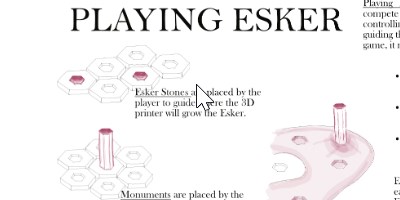
- Linas K. Gabrielaitis, Oğuz ‘Oz’ Buruk, -
CHI PLAY Companion '24 (SGDC Finalist)
[h5-index: 31, acceptance rate: 53%]
@inproceedings{playingesker2024chiplay, author = {Gabrielaitis, Linas K. and Buruk, Oğuz ‘Oz’}, title = {Playing Esker Formations: Additive Games with a 3D Printer}, year = {2024}, isbn = {9798400706929}, publisher = {Association for Computing Machinery}, address = {New York, NY, USA}, url = {https://doi.org/10.1145/3665463.3678828}, doi = {10.1145/3665463.3678828}, abstract = {An esker is a geological formation created by a melting glacier, as subglacial streams of meltwater continuously add layers of gravel. A 3D printer crafts by adding layers of molten streams of plastic, in a continuous additive fabrication process. We designed the game ‘Playing Esker’, a strategy game where two players compete over the gradual printing of esker formations. Following a research-through-game-design approach, we document how additive material fabrication processes can be used as gamespaces, highlighting 3 themes for Additive Games: (1) Additive turn-taking, where we explored playful turn-based interactions with the printer. (2) Material constraints, where we treated material limitations as game mechanics. (3) Earth-procedurality, where we used procedural generation in combination with additive games to engage players with the unpredictable formations of the esker. Lastly, we reflect on geophilosophical and geological ideas, which we used as generative lenses to inspire new and alternative forms of world-building. By emphasising the earth and world-formation processes through gameplay, geophilosophy can inspire new modes of non-human world-building, agency and territoriality in games.}, booktitle = {Companion Proceedings of the 2024 Annual Symposium on Computer-Human Interaction in Play}, pages = {365–371}, location = {Tampere, Finland}, series = {CHI PLAY Companion '24} }
Linas K. Gabrielaitis and Oğuz ‘Oz’ Buruk. 2024. Playing Esker Formations: Additive Games with a 3D Printer. In Companion Proceedings of the 2024 Annual Symposium on Computer-Human Interaction in Play (CHI PLAY Companion '24). Association for Computing Machinery, New York, NY, USA, 365–371. https://doi.org/10.1145/3665463.3678828
Gabrielaitis, L. K., & Buruk, O. (2024). Playing Esker Formations: Additive Games with a 3D Printer. In Companion Proceedings of the 2024 Annual Symposium on Computer-Human Interaction in Play (CHI PLAY Companion '24). pp. 365–371. New York, NY, USA, Association for Computing Machinery, https://doi.org/10.1145/3665463.3678828
Gabrielaitis, Linas K. and Oğuz ‘Oz’ Buruk."Playing Esker Formations: Additive Games with a 3D Printer." In Companion Proceedings of the 2024 Annual Symposium on Computer-Human Interaction in Play (CHI PLAY Companion '24), New York, NY, USA, Association for Computing Machinery, 2024, pp. 365–371. https://doi.org/10.1145/3665463.3678828
Gabrielaitis, L. K., and Buruk, O. (2024). ‘Playing Esker Formations: Additive Games with a 3D Printer’, In Companion Proceedings of the 2024 Annual Symposium on Computer-Human Interaction in Play (CHI PLAY Companion '24), p. 365–371. New York, NY, USA: Association for Computing Machinery, https://doi.org/10.1145/3665463.3678828
Gabrielaitis LK, Buruk O. Playing Esker Formations: Additive Games with a 3D Printer. In: Companion Proceedings of the 2024 Annual Symposium on Computer-Human Interaction in Play (CHI PLAY Companion '24). New York, NY, USA: Association for Computing Machinery; 2024. p. 365–371. Available from: https://doi.org/10.1145/3665463.3678828
Gabrielaitis, Linas K., and Oğuz ‘Oz’ Buruk. "Playing Esker Formations: Additive Games with a 3D Printer." In Companion Proceedings of the 2024 Annual Symposium on Computer-Human Interaction in Play (CHI PLAY Companion '24), New York, NY, USA, Association for Computing Machinery, (2024): 365–371. https://doi.org/10.1145/3665463.3678828
GABRIELAITIS, L. K.; BURUK, O. Playing Esker Formations: Additive Games with a 3D Printer. In: Companion Proceedings of the 2024 Annual Symposium on Computer-Human Interaction in Play (CHI PLAY Companion '24). New York, NY, USA: Association for Computing Machinery, 2024. pp. 365–371. https://doi.org/10.1145/3665463.3678828
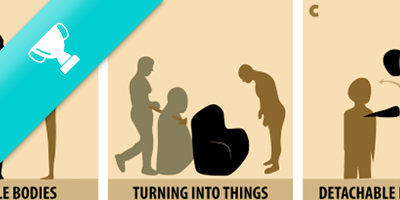
- Çağlar Genç, Velvet Spors, Oğuz ‘Oz’ Buruk, et al. -
Mindtrek '23 (Poster)
[h5-index: 14, acceptance rate: 50%]
@inproceedings{crafting2023mindtrek, author = {Genç, Çağlar and Spors, Velvet and Buruk, Oğuz ‘Oz’ and Thibault, Mattia and Masek, Leland and Hamari, Juho}, title = {Crafting Bodies and Auras: Speculative Designs for Transhuman Communication}, year = {2023}, isbn = {9798400708749}, publisher = {Association for Computing Machinery}, address = {New York, NY, USA}, url = {https://doi.org/10.1145/3616961.3617810}, doi = {10.1145/3616961.3617810}, abstract = {Bodies exhibit communicative qualities, including gestures, facial expressions, body odors, and changes in proximity, like tattoos, clothing, and accessories. However, a transformative shift in human bodies looms ahead, propelled by transhumanism’s proposition of integrating machines with humans to enhance physical, sensorial, cognitive, and emotional capacities. This poster explores communication opportunities and potential consequences around transhuman technologies for the temporal alterations on the body through speculative designs. These speculations are formed based on four co-speculation workshops with the attendance of participants (N=35) with varying experiences in fiction creation and technology development. By envisioning flexible bodies, transforming into objects, detachable body parts, chameleon skin, and multimodal auras, our work contributes design speculations to spark discussions on the transformative impact of transhuman technologies on communication, prompting innovative investigations into this uncharted territory.}, booktitle = {Proceedings of the 26th International Academic Mindtrek Conference}, pages = {354–358}, numpages = {5}, keywords = {Transhumanism, communication, human augmentation, human-technology integration, speculative design, wearables}, location = {Tampere, Finland}, series = {Mindtrek '23} }
Çağlar Genç, Velvet Spors, Oğuz ‘Oz’ Buruk, Mattia Thibault, Leland Masek and Juho Hamari. 2023. Crafting Bodies and Auras: Speculative Designs for Transhuman Communication. In Proceedings of the 26th International Academic Mindtrek Conference (Mindtrek '23). Association for Computing Machinery, New York, NY, USA, 354–358. https://doi.org/10.1145/3616961.3617810
Genç, Ç., Spors, V., Buruk, O., Thibault, M., Masek, L., & Hamari, J. (2023). Crafting Bodies and Auras: Speculative Designs for Transhuman Communication. In Proceedings of the 26th International Academic Mindtrek Conference (Mindtrek '23). pp. 354–358. 1-5. New York, NY, USA, Association for Computing Machinery, https://doi.org/10.1145/3616961.3617810
Genç, Çağlar et al. "Crafting Bodies and Auras: Speculative Designs for Transhuman Communication." In Proceedings of the 26th International Academic Mindtrek Conference (Mindtrek '23), New York, NY, USA, Association for Computing Machinery, 2023, pp. 354–358. pp. 1-5. https://doi.org/10.1145/3616961.3617810
Genç, Ç., Spors, V., Buruk, O., Thibault, M., Masek, L., and Hamari, J. (2023). ‘Crafting Bodies and Auras: Speculative Designs for Transhuman Communication’, In Proceedings of the 26th International Academic Mindtrek Conference (Mindtrek '23), p. 354–358. p. 1-5. New York, NY, USA: Association for Computing Machinery, https://doi.org/10.1145/3616961.3617810
Genç Ç, Spors V, Buruk O, Thibault M, Masek L, Hamari J. Crafting Bodies and Auras: Speculative Designs for Transhuman Communication. In: Proceedings of the 26th International Academic Mindtrek Conference (Mindtrek '23). New York, NY, USA: Association for Computing Machinery; 2023. p. 354–358. p. 1-5. Available from: https://doi.org/10.1145/3616961.3617810
Genç, Çağlar, Velvet Spors, Oğuz ‘Oz’ Buruk, Mattia Thibault, Leland Masek, and Juho Hamari. "Crafting Bodies and Auras: Speculative Designs for Transhuman Communication." In Proceedings of the 26th International Academic Mindtrek Conference (Mindtrek '23), New York, NY, USA, Association for Computing Machinery, (2023): 354–358. 1-5. https://doi.org/10.1145/3616961.3617810
GENç, Ç.; SPORS, V.; BURUK, O.; THIBAULT, M.; MASEK, L.; HAMARI, J. Crafting Bodies and Auras: Speculative Designs for Transhuman Communication. In: Proceedings of the 26th International Academic Mindtrek Conference (Mindtrek '23). New York, NY, USA: Association for Computing Machinery, 2023. pp. 354–358. 1-5. https://doi.org/10.1145/3616961.3617810
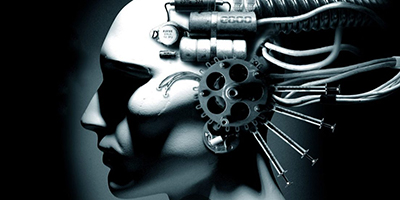
- Oğuz ‘Oz’ Buruk, O. Özcan, G. Elif Baykal et al. -
CHI EA '20 (alt.CHI)
[h5-index: 129]
@inproceedings{children772020altchi, author = {Buruk, Oğuz ‘Oz’ and Özcan, Oğuzhan and Baykal, Gökçe Elif and Göksun, Tilbe and Acar, Selçuk and Akduman, Güler and Baytaş, Mehmet Aydın and Beşevli, Ceylan and Best, Joe and Coşkun, Aykut and Genç, Hüseyin Uğur and Kocaballı, A. Baki and Laato, Samuli and Mota, Cásssia and Papangelis, Konstantinos and Raftopoulos, Marigo and Ramchurn, Richard and Sádaba, Juan and Thibault, Mattia and Wolff, Annika and Yıldız, Mert}, title = {Children in 2077: Designing Children's Technologies in the Age of Transhumanism}, year = {2020}, isbn = {9781450368193}, publisher = {Association for Computing Machinery}, address = {New York, NY, USA}, url = {https://doi.org/10.1145/3334480.3381821}, doi = {10.1145/3334480.3381821}, abstract = {What for and how will we design children's technologies in the transhumanism age, and what stance will we take as designers? This paper aims to answer this question with 13 fictional abstracts from sixteen authors of different countries, institutions and disciplines. Transhumanist thinking envisions enhancing human body and mind by blending human biology with technological augmentations. Fundamentally, it seeks to improve the human species, yet the impacts of such movement are unknown and the implications on children's lives and technologies were not explored deeply. In an age, where technologies such as under-skin chips or brain-machine interfaces can clearly be defined as transhumanist, our aim is to reveal probable pitfalls and benefits of those technologies on children's lives by using the power of design fiction. Thus, main contribution of this paper is to create diverse presentation of provocative research ideas that will foster the discussion on the transhumanist technologies impacting the lives of children in the future.}, booktitle = {Extended Abstracts of the 2020 CHI Conference on Human Factors in Computing Systems}, pages = {1–14}, keywords = {cyborg, design fiction, interaction design, posthumanism, augmented human, brain-machine interface, transhumanism, speculation, children, wearables}, location = {Honolulu, HI, USA}, series = {CHI EA '20} }
Oğuz ‘Oz’ Buruk, Oğuzhan Özcan, Gökçe Elif Baykal, Tilbe Göksun, Selçuk Acar, Güler Akduman, Mehmet Aydın Baytaş, Ceylan Beşevli, Joe Best, Aykut Coşkun, Hüseyin Uğur Genç, A. Baki Kocaballı, Samuli Laato, Cásssia Mota, Konstantinos Papangelis, Marigo Raftopoulos, Richard Ramchurn, Juan Sádaba, Mattia Thibault, Annika Wolff and Mert Yıldız. 2020. Children in 2077: Designing Children's Technologies in the Age of Transhumanism. In Extended Abstracts of the 2020 CHI Conference on Human Factors in Computing Systems (CHI EA '20). Association for Computing Machinery, New York, NY, USA, 1–14. https://doi.org/10.1145/3334480.3381821
Buruk, O., Özcan, O., Baykal, G. E., Göksun, T., Acar, S., Akduman, G., Baytaş, M. A., Beşevli, C., Best, J., Coşkun, A., Genç, H. U., Kocaballı, A. B., Laato, S., Mota, C., Papangelis, K., Raftopoulos, M., Ramchurn, R., Sádaba, J., Thibault, M., Wolff, A., & Yıldız, M. (2020). Children in 2077: Designing Children's Technologies in the Age of Transhumanism. In Extended Abstracts of the 2020 CHI Conference on Human Factors in Computing Systems (CHI EA '20). pp. 1–14. New York, NY, USA, Association for Computing Machinery, https://doi.org/10.1145/3334480.3381821
Buruk, Oğuz ‘Oz’ et al. "Children in 2077: Designing Children's Technologies in the Age of Transhumanism." In Extended Abstracts of the 2020 CHI Conference on Human Factors in Computing Systems (CHI EA '20), New York, NY, USA, Association for Computing Machinery, 2020, pp. 1–14. https://doi.org/10.1145/3334480.3381821
Buruk, O., Özcan, O., Baykal, G. E., Göksun, T., Acar, S., Akduman, G., Baytaş, M. A., Beşevli, C., Best, J., Coşkun, A., Genç, H. U., Kocaballı, A. B., Laato, S., Mota, C., Papangelis, K., Raftopoulos, M., Ramchurn, R., Sádaba, J., Thibault, M., Wolff, A., and Yıldız, M. (2020). ‘Children in 2077: Designing Children's Technologies in the Age of Transhumanism’, In Extended Abstracts of the 2020 CHI Conference on Human Factors in Computing Systems (CHI EA '20), p. 1–14. New York, NY, USA: Association for Computing Machinery, https://doi.org/10.1145/3334480.3381821
Buruk O, Özcan O, Baykal GE, Göksun T, Acar S, Akduman G, et al. Children in 2077: Designing Children's Technologies in the Age of Transhumanism. In: Extended Abstracts of the 2020 CHI Conference on Human Factors in Computing Systems (CHI EA '20). New York, NY, USA: Association for Computing Machinery; 2020. p. 1–14. Available from: https://doi.org/10.1145/3334480.3381821
Buruk, Oğuz ‘Oz’, Oğuzhan Özcan, Gökçe Elif Baykal, Tilbe Göksun, Selçuk Acar, Güler Akduman, Mehmet Aydın Baytaş, Ceylan Beşevli, Joe Best, Aykut Coşkun, Hüseyin Uğur Genç, A. Baki Kocaballı, Samuli Laato, Cásssia Mota, Konstantinos Papangelis, Marigo Raftopoulos, Richard Ramchurn, Juan Sádaba, Mattia Thibault, Annika Wolff, and Mert Yıldız. "Children in 2077: Designing Children's Technologies in the Age of Transhumanism." In Extended Abstracts of the 2020 CHI Conference on Human Factors in Computing Systems (CHI EA '20), New York, NY, USA, Association for Computing Machinery, (2020): 1–14. https://doi.org/10.1145/3334480.3381821
BURUK, O.; ÖZCAN, O.; BAYKAL, G. E.; GöKSUN, T.; ACAR, S.; AKDUMAN, G.; BAYTAş, M. A.; BEşEVLI, C.; BEST, J.; COşKUN, A.; GENç, H. U.; KOCABALLı, A. B.; LAATO, S.; MOTA, C.; PAPANGELIS, K.; RAFTOPOULOS, M.; RAMCHURN, R.; SáDABA, J.; THIBAULT, M.; WOLFF, A.; YıLDıZ, M. Children in 2077: Designing Children's Technologies in the Age of Transhumanism. In: Extended Abstracts of the 2020 CHI Conference on Human Factors in Computing Systems (CHI EA '20). New York, NY, USA: Association for Computing Machinery, 2020. pp. 1–14. https://doi.org/10.1145/3334480.3381821
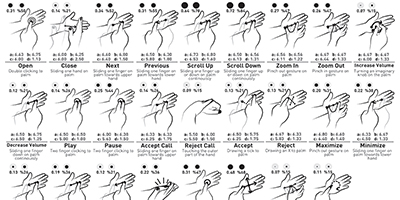
- Ceylan Beşevli, Oğuz ‘Oz’ Buruk, M. Erkaya et al. -
DIS '18 Companion (Poster)
[h5-index: 41]
@inproceedings{legacy2018dis, author = {Beşevli, Ceylan and Buruk, Oğuz ‘Oz’ and Erkaya, Merve and Özcan, Oğuzhan}, title = {Investigating the Effects of Legacy Bias: User Elicited Gestures from the End Users Perspective}, year = {2018}, isbn = {9781450356312}, publisher = {Association for Computing Machinery}, address = {New York, NY, USA}, url = {https://doi.org/10.1145/3197391.3205449}, doi = {10.1145/3197391.3205449}, abstract = {User elicitation studies are commonly used for designing gestures by putting the users in the designers' seat. One of the most encountered phenomenon during these studies is legacy bias. It refers to users' tendency to transfer gestures from the existing technologies to their designs. The literature presents varying views on the topic; some studies asserted that legacy bias should be diminished, whereas other stated that it should be preserved. Yet, to the best of our knowledge, none of the elicitation studies tested their designs with the end users. In our study, 36 participants compared two gesture sets with and without legacy. Initial findings showed that legacy gesture set had higher scores. However, the interviews uncovered that some non-legacy gestures were also favored due to their practicality and affordances. We contribute to the legacy bias literature by providing new insights from the end users' perspective.}, booktitle = {Proceedings of the 2018 ACM Conference Companion Publication on Designing Interactive Systems}, pages = {277–281}, keywords = {legacy bias, user elicitation, gesture control, embodied interaction}, location = {Hong Kong, China}, series = {DIS '18 Companion} }
Ceylan Beşevli, Oğuz ‘Oz’ Buruk, Merve Erkaya and Oğuzhan Özcan. 2018. Investigating the Effects of Legacy Bias: User Elicited Gestures from the End Users Perspective. In Proceedings of the 2018 ACM Conference Companion Publication on Designing Interactive Systems (DIS '18 Companion). Association for Computing Machinery, New York, NY, USA, 277–281. https://doi.org/10.1145/3197391.3205449
Beşevli, C., Buruk, O., Erkaya, M., & Özcan, O. (2018). Investigating the Effects of Legacy Bias: User Elicited Gestures from the End Users Perspective. In Proceedings of the 2018 ACM Conference Companion Publication on Designing Interactive Systems (DIS '18 Companion). pp. 277–281. New York, NY, USA, Association for Computing Machinery, https://doi.org/10.1145/3197391.3205449
Beşevli, Ceylan et al. "Investigating the Effects of Legacy Bias: User Elicited Gestures from the End Users Perspective." In Proceedings of the 2018 ACM Conference Companion Publication on Designing Interactive Systems (DIS '18 Companion), New York, NY, USA, Association for Computing Machinery, 2018, pp. 277–281. https://doi.org/10.1145/3197391.3205449
Beşevli, C., Buruk, O., Erkaya, M., and Özcan, O. (2018). ‘Investigating the Effects of Legacy Bias: User Elicited Gestures from the End Users Perspective’, In Proceedings of the 2018 ACM Conference Companion Publication on Designing Interactive Systems (DIS '18 Companion), p. 277–281. New York, NY, USA: Association for Computing Machinery, https://doi.org/10.1145/3197391.3205449
Beşevli C, Buruk O, Erkaya M, Özcan O. Investigating the Effects of Legacy Bias: User Elicited Gestures from the End Users Perspective. In: Proceedings of the 2018 ACM Conference Companion Publication on Designing Interactive Systems (DIS '18 Companion). New York, NY, USA: Association for Computing Machinery; 2018. p. 277–281. Available from: https://doi.org/10.1145/3197391.3205449
Beşevli, Ceylan, Oğuz ‘Oz’ Buruk, Merve Erkaya, and Oğuzhan Özcan. "Investigating the Effects of Legacy Bias: User Elicited Gestures from the End Users Perspective." In Proceedings of the 2018 ACM Conference Companion Publication on Designing Interactive Systems (DIS '18 Companion), New York, NY, USA, Association for Computing Machinery, (2018): 277–281. https://doi.org/10.1145/3197391.3205449
BEşEVLI, C.; BURUK, O.; ERKAYA, M.; ÖZCAN, O. Investigating the Effects of Legacy Bias: User Elicited Gestures from the End Users Perspective. In: Proceedings of the 2018 ACM Conference Companion Publication on Designing Interactive Systems (DIS '18 Companion). New York, NY, USA: Association for Computing Machinery, 2018. pp. 277–281. https://doi.org/10.1145/3197391.3205449

- Oğuz ‘Oz’ Buruk, I. Melih Özbeyli, O. Özcan -
CHI PLAY EA '17 (SGDC Finalist)
[h5-index: 30, acceptance rate: 35%]
@inproceedings{wearpg2017chiplay, author = {Buruk, Oğuz ‘Oz’ and Özbeyli, Ismet Melih and Özcan, Oğuzhan}, title = {WEARPG: Movement-Based Tabletop Role-Playing Game with Arm-Worn Devices and an Augmented Die}, year = {2017}, isbn = {9781450351119}, publisher = {Association for Computing Machinery}, address = {New York, NY, USA}, url = {https://doi.org/10.1145/3130859.3130868}, doi = {10.1145/3130859.3130868}, abstract = {Augmenting tabletop role-playing games (TTRPG) with computers took much attention of researchers recently. Nevertheless, these efforts mostly remained as functional augmentations. We believe that integrating new gameplay styles to this genre is still an underexplored area. Drawing upon the previous studies, we believe that wearables which support movement-based gameplay can be a good step taken in this direction as previous studies claim that wearables can strengthen the link to the imaginary worlds which is critical for TTRPG experience while the movement-based play can increase the player engagement. However, previous studies did not investigate these concepts with an implemented technology. Therefore, to get a better understanding of how wearables can alter the TTRPG experience, we designed a new RPG game system and developed the Elemental Gauntlet and the Luck Stone which enable movement-based game play in TTRPG context. Our preliminary results showed that, movement-based play and wearable props strengthen the identification feeling with the fictional character and resulted in a better immersion to the imaginary world of the game.}, booktitle = {Extended Abstracts Publication of the Annual Symposium on Computer-Human Interaction in Play}, pages = {639–646}, keywords = {exertion games, gestures, movement-based game, PNPRPG, role playing games, participatory design, TTRPG, tabletop, wearable computing}, location = {Amsterdam, The Netherlands}, series = {CHI PLAY EA '17} }
Oğuz ‘Oz’ Buruk, Ismet Melih Özbeyli and Oğuzhan Özcan. 2017. WEARPG: Movement-Based Tabletop Role-Playing Game with Arm-Worn Devices and an Augmented Die. In Extended Abstracts Publication of the Annual Symposium on Computer-Human Interaction in Play (CHI PLAY EA '17). Association for Computing Machinery, New York, NY, USA, 639–646. https://doi.org/10.1145/3130859.3130868
Buruk, O., Özbeyli, I. M., & Özcan, O. (2017). WEARPG: Movement-Based Tabletop Role-Playing Game with Arm-Worn Devices and an Augmented Die. In Extended Abstracts Publication of the Annual Symposium on Computer-Human Interaction in Play (CHI PLAY EA '17). pp. 639–646. New York, NY, USA, Association for Computing Machinery, https://doi.org/10.1145/3130859.3130868
Buruk, Oğuz ‘Oz’ et al. "WEARPG: Movement-Based Tabletop Role-Playing Game with Arm-Worn Devices and an Augmented Die." In Extended Abstracts Publication of the Annual Symposium on Computer-Human Interaction in Play (CHI PLAY EA '17), New York, NY, USA, Association for Computing Machinery, 2017, pp. 639–646. https://doi.org/10.1145/3130859.3130868
Buruk, O., Özbeyli, I. M., and Özcan, O. (2017). ‘WEARPG: Movement-Based Tabletop Role-Playing Game with Arm-Worn Devices and an Augmented Die’, In Extended Abstracts Publication of the Annual Symposium on Computer-Human Interaction in Play (CHI PLAY EA '17), p. 639–646. New York, NY, USA: Association for Computing Machinery, https://doi.org/10.1145/3130859.3130868
Buruk O, Özbeyli IM, Özcan O. WEARPG: Movement-Based Tabletop Role-Playing Game with Arm-Worn Devices and an Augmented Die. In: Extended Abstracts Publication of the Annual Symposium on Computer-Human Interaction in Play (CHI PLAY EA '17). New York, NY, USA: Association for Computing Machinery; 2017. p. 639–646. Available from: https://doi.org/10.1145/3130859.3130868
Buruk, Oğuz ‘Oz’, Ismet Melih Özbeyli, and Oğuzhan Özcan. "WEARPG: Movement-Based Tabletop Role-Playing Game with Arm-Worn Devices and an Augmented Die." In Extended Abstracts Publication of the Annual Symposium on Computer-Human Interaction in Play (CHI PLAY EA '17), New York, NY, USA, Association for Computing Machinery, (2017): 639–646. https://doi.org/10.1145/3130859.3130868
BURUK, O.; ÖZBEYLI, I. M.; ÖZCAN, O. WEARPG: Movement-Based Tabletop Role-Playing Game with Arm-Worn Devices and an Augmented Die. In: Extended Abstracts Publication of the Annual Symposium on Computer-Human Interaction in Play (CHI PLAY EA '17). New York, NY, USA: Association for Computing Machinery, 2017. pp. 639–646. https://doi.org/10.1145/3130859.3130868

- Eric P.S. Baumer, June Ahn, Mei Bie, et al. -
CHI EA '14 (alt.CHI)
[h5-index: 129]
@inproceedings{speculative2014chi, author = {Baumer, Eric P.S. and Ahn, June and Bie, Mei and Bonsignore, Elizabeth M. and Börütecene, Ahmet and Buruk, Oğuz ‘Oz’ and Clegg, Tamara and Druin, Allison and Echtler, Florian and Gruen, Dan and Guha, Mona Leigh and Hordatt, Chelsea and Krüger, Antonio and Maidenbaum, Shachar and Malu, Meethu and McNally, Brenna and Muller, Michael and Norooz, Leyla and Norton, Juliet and Özcan, Oğuzhan and Patterson, Donald J. and Riener, Andreas and Ross, Steven I. and Rust, Karen and Schöning, Johannes and Silberman, M. Six and Tomlinson, Bill and Yip, Jason}, title = {CHI 2039: Speculative Research Visions}, year = {2014}, isbn = {9781450324748}, publisher = {Association for Computing Machinery}, address = {New York, NY, USA}, url = {https://doi.org/10.1145/2559206.2578864}, doi = {10.1145/2559206.2578864}, abstract = {This paper presents a curated collection of fictional abstracts for papers that could appear in the proceedings of the 2039 CHI Conference. It provides an opportunity to consider the various visions guiding work in HCI, the futures toward which we (believe we) are working, and how research in the field might relate with broader social, political, and cultural changes over the next quarter century.}, booktitle = {CHI '14 Extended Abstracts on Human Factors in Computing Systems}, pages = {761–770}, keywords = {fiction, vision, future}, location = {Toronto, Ontario, Canada}, series = {CHI EA '14} }
Eric P.S. Baumer, June Ahn, Mei Bie, Elizabeth M. Bonsignore, Ahmet Börütecene, Oğuz ‘Oz’ Buruk, Tamara Clegg, Allison Druin, Florian Echtler, Dan Gruen, Mona Leigh Guha, Chelsea Hordatt, Antonio Krüger, Shachar Maidenbaum, Meethu Malu, Brenna McNally, Michael Muller, Leyla Norooz, Juliet Norton, Oğuzhan Özcan, Donald J. Patterson, Andreas Riener, Steven I. Ross, Karen Rust, Johannes Schöning, M. Six Silberman, Bill Tomlinson and Jason Yip. 2014. CHI 2039: Speculative Research Visions. In CHI '14 Extended Abstracts on Human Factors in Computing Systems (CHI EA '14). Association for Computing Machinery, New York, NY, USA, 761–770. https://doi.org/10.1145/2559206.2578864
Baumer, E. P., Ahn, J., Bie, M., Bonsignore, E. M., Börütecene, A., Buruk, O., Clegg, T., Druin, A., Echtler, F., Gruen, D., Guha, M. L., Hordatt, C., Krüger, A., Maidenbaum, S., Malu, M., McNally, B., Muller, M., Norooz, L., Norton, J., Özcan, O., Patterson, D. J., Riener, A., Ross, S. I., Rust, K., Schöning, J., Silberman, M. S., Tomlinson, B., & Yip, J. (2014). CHI 2039: Speculative Research Visions. In CHI '14 Extended Abstracts on Human Factors in Computing Systems (CHI EA '14). pp. 761–770. New York, NY, USA, Association for Computing Machinery, https://doi.org/10.1145/2559206.2578864
Baumer, Eric P. et al. "CHI 2039: Speculative Research Visions." In CHI '14 Extended Abstracts on Human Factors in Computing Systems (CHI EA '14), New York, NY, USA, Association for Computing Machinery, 2014, pp. 761–770. https://doi.org/10.1145/2559206.2578864
Baumer, E. P., Ahn, J., Bie, M., Bonsignore, E. M., Börütecene, A., Buruk, O., Clegg, T., Druin, A., Echtler, F., Gruen, D., Guha, M. L., Hordatt, C., Krüger, A., Maidenbaum, S., Malu, M., McNally, B., Muller, M., Norooz, L., Norton, J., Özcan, O., Patterson, D. J., Riener, A., Ross, S. I., Rust, K., Schöning, J., Silberman, M. S., Tomlinson, B., and Yip, J. (2014). ‘CHI 2039: Speculative Research Visions’, In CHI '14 Extended Abstracts on Human Factors in Computing Systems (CHI EA '14), p. 761–770. New York, NY, USA: Association for Computing Machinery, https://doi.org/10.1145/2559206.2578864
Baumer EP, Ahn J, Bie M, Bonsignore EM, Börütecene A, Buruk O, et al. CHI 2039: Speculative Research Visions. In: CHI '14 Extended Abstracts on Human Factors in Computing Systems (CHI EA '14). New York, NY, USA: Association for Computing Machinery; 2014. p. 761–770. Available from: https://doi.org/10.1145/2559206.2578864
Baumer, Eric P., June Ahn, Mei Bie, Elizabeth M. Bonsignore, Ahmet Börütecene, Oğuz ‘Oz’ Buruk, Tamara Clegg, Allison Druin, Florian Echtler, Dan Gruen, Mona Leigh Guha, Chelsea Hordatt, Antonio Krüger, Shachar Maidenbaum, Meethu Malu, Brenna McNally, Michael Muller, Leyla Norooz, Juliet Norton, Oğuzhan Özcan, Donald J. Patterson, Andreas Riener, Steven I. Ross, Karen Rust, Johannes Schöning, M. Six Silberman, Bill Tomlinson, and Jason Yip. "CHI 2039: Speculative Research Visions." In CHI '14 Extended Abstracts on Human Factors in Computing Systems (CHI EA '14), New York, NY, USA, Association for Computing Machinery, (2014): 761–770. https://doi.org/10.1145/2559206.2578864
BAUMER, E. P.; AHN, J.; BIE, M.; BONSIGNORE, E. M.; BöRüTECENE, A.; BURUK, O.; CLEGG, T.; DRUIN, A.; ECHTLER, F.; GRUEN, D.; GUHA, M. L.; HORDATT, C.; KRüGER, A.; MAIDENBAUM, S.; MALU, M.; MCNALLY, B.; MULLER, M.; NOROOZ, L.; NORTON, J.; ÖZCAN, O.; PATTERSON, D. J.; RIENER, A.; ROSS, S. I.; RUST, K.; SCHöNING, J.; SILBERMAN, M. S.; TOMLINSON, B.; YIP, J. CHI 2039: Speculative Research Visions. In: CHI '14 Extended Abstracts on Human Factors in Computing Systems (CHI EA '14). New York, NY, USA: Association for Computing Machinery, 2014. pp. 761–770. https://doi.org/10.1145/2559206.2578864
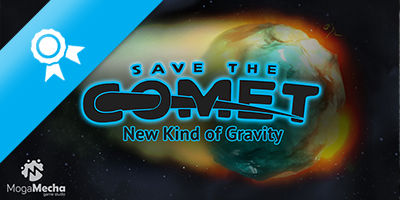
- Erdin Kaçan, Oğuz ‘Oz’ Buruk, Onur Sipahi, et al. -
Android Game
Crystal Pixel Best Game Design and Most Innovative Game Nominee
Google Play Web Page Facebook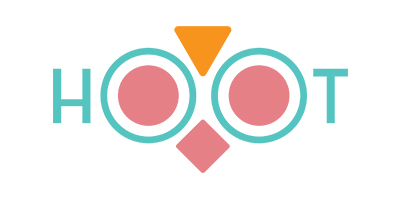
- Erdin Kaçan, Oğuz ‘Oz’ Buruk, B. Baduroğlu et al. -
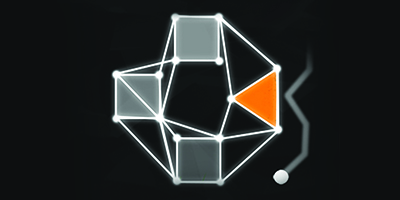
- Erdin Kaçan, Oğuz ‘Oz’ Buruk, Onur Sipahi, et al. -
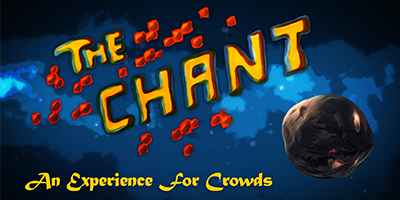
- Erdin Kaçan, Oğuz ‘Oz’ Buruk, A. Nazif Sati et al. -
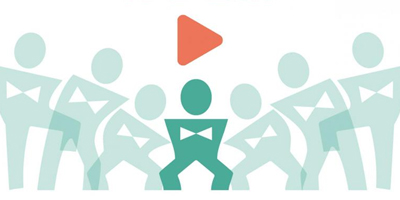
- Erdin Kaçan, Oğuz ‘Oz’ Buruk, Güney Özsan, et al. -

- Erdin Kaçan, Oğuz ‘Oz’ Buruk, -